
- Home
- Travel Packages
- Top Destination
-
Travel Attraction
By Category
Top Attraction

- Travel Agents
- Car Rentals
- Hotels
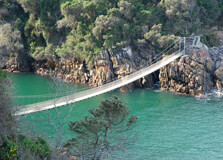
The Garden Route National Park is a picturesque paradise located on the southern coast of South Africa. It is a combination of three distinct sections – the Tsitsikamma, Wilderness, and Knysna national parks. The park covers a vast area of lush forests, pristine beaches, and dramatic coastlines, making it a popular destination for nature lovers and outdoor enthusiasts. Location and Geographical Overview The Garden Route National Park stretches along the Garden Route, a scenic stretch of coastline that runs from Mossel Bay in the west to Storms River in the east. The park is situated in the Western Cape province of South Africa, approximately a 5-hour drive from Cape Town. Opening and Closing Time The Garden Route National Park is open to visitors all year round. The gates typically open at 7 am and close at 6 pm. Entry Fee Entry fees to the Garden Route National Park vary depending on the section you are visiting and the activities you plan to do. The fees range from R40 to R200 for adults, with discounted rates for children and senior citizens. Species-Flora/Fauna Availability The Garden Route National Park is home to a diverse range of plant and animal species. The park is famous for its ancient forests, including giant yellowwoods and Outeniqua yellowwoods. Wildlife enthusiasts can also spot a variety of animals, such as elephants, buffaloes, leopards, and various bird species. Activities Performed Visitors to the Garden Route National Park can enjoy a wide range of activities, including hiking, birdwatching, picnicking, swimming, and camping. The park also offers guided walks, boat cruises, and jeep safaris for a more immersive experience. Jeep Safari Charges Jeep safari charges in the Garden Route National Park vary depending on the duration and route of the safari. Prices typically range from R500 to R1500 per person. Age Criterion and Entry Fee Entry fees for the Garden Route National Park are based on age categories. Children under the age of 12 usually enjoy discounted rates, while senior citizens may also be eligible for reduced fees. Adult entry fees apply to individuals over the age of 18. Senior Citizen Facilities The Garden Route National Park offers facilities and services tailored to the needs of senior citizens, including wheelchair-accessible paths, rest areas, and discounted rates for entry fees and activities. Best Time to Visit The best time to visit the Garden Route National Park is during the spring and autumn months (September to November and March to May), when the weather is mild, and the landscapes are lush and vibrant. However, the park is open year-round and offers unique experiences in every season. Nearby Places to Visit While exploring the Garden Route National Park, visitors can also visit nearby attractions such as the Tsitsikamma National Park, Wilderness National Park, and Knysna Lagoon. The charming towns of Knysna, Plettenberg Bay, and George are also worth a visit. Vehicle Parking Facility The Garden Route National Park provides parking facilities at designated areas near the entrance gates and popular attractions. Visitors are advised to follow the park's regulations and guidelines when parking their vehicles. Rules and Regulations Visitors to the Garden Route National Park are required to abide by certain rules and regulations to ensure the safety of themselves, other visitors, and the park's ecosystem. Some common regulations include staying on designated trails, refraining from littering, and respecting wildlife habitats. How to Reach and Other Related Information The Garden Route National Park is easily accessible by car from major cities in South Africa. Visitors can also reach the park by bus or organized tours. For more information on directions, accommodations, and activities, visitors can contact the park's visitor center or visit the official website.
Explore More
About Shamwari Game Reserve Located in the Eastern Cape of South Africa, the Shamwari Game Reserve is a premier safari destination known for its conservation efforts and incredible wildlife viewing opportunities. Spanning over 25,000 hectares of pristine wilderness, Shamwari offers visitors a chance to see the Big 5 (lion, elephant, buffalo, leopard, and rhinoceros) as well as a wide variety of other animal and plant species. Location and Geographical Overview The Shamwari Game Reserve is situated in the Eastern Cape province of South Africa, near the town of Paterson. The reserve is easily accessible from Port Elizabeth, which is approximately a one-hour drive away. Open and Closing Time The Shamwari Game Reserve is open daily from 6:00 am to 6:00 pm. It is important to note that specific activities may have different operating hours, so it is recommended to check with the reserve beforehand. Entry Fee The entry fee to Shamwari Game Reserve varies depending on the type of experience you choose. Day visitors can expect to pay a fee for game drives and other activities, while overnight guests typically book all-inclusive packages that include accommodation, meals, and safari activities. Species-Flora/Fauna Availability Shamwari Game Reserve is home to a wide variety of flora and fauna, including the Big 5, cheetahs, zebras, giraffes, and numerous bird species. The reserve is also committed to conservation efforts, with dedicated programs to protect endangered species and preserve the natural environment. Activities Performed Visitors to Shamwari Game Reserve can enjoy a range of activities, including game drives, guided walks, bird watching, and visits to the Born Free Big Cat Sanctuary. The reserve also offers cultural experiences and wellness activities to enhance your safari experience. Jeep Safari Charges Jeep safari charges at Shamwari Game Reserve vary depending on the duration and type of safari experience you choose. Prices typically include the services of a professional guide and ranger, as well as refreshments during the excursion. Age Criterion and Entry Fee Children under a certain age may not be permitted on certain safari activities at Shamwari Game Reserve. Entry fees for male and female visitors typically do not differ, but discounts may be available for children. It is advisable to check the age requirements and pricing policies before booking your visit. Senior Citizen Facilities Shamwari Game Reserve caters to senior citizens with accessible accommodations, vehicles, and safari activities. Specialized tours and experiences can be arranged for older guests to ensure their comfort and enjoyment during their visit. Best Time to Visit The best time to visit Shamwari Game Reserve is during the dry season, which typically occurs from May to September. During this time, wildlife viewing is at its peak as animals gather around water sources, making sightings more frequent and rewarding. Nearby Places to Visit While visiting Shamwari Game Reserve, you may also want to explore nearby attractions such as Addo Elephant National Park, Grahamstown's historical sites, and the beautiful beaches along the Eastern Cape coastline. These destinations offer a variety of experiences to complement your safari adventure. Vehicle Parking Facility Shamwari Game Reserve provides ample parking facilities for visitors who arrive by car. Whether you are a day visitor or staying overnight, you can rest assured that your vehicle will be safe and secure during your time at the reserve. Rules and Regulations As a conservation-focused reserve, Shamwari Game Reserve has strict rules and regulations in place to ensure the safety of guests and the protection of the environment. These guidelines may include restrictions on off-road driving, noise levels, and interactions with wildlife, so it is important to adhere to the guidelines set forth by the reserve. How to Reach and Other Related Information Shamwari Game Reserve is easily accessible by road from Port Elizabeth, which has an international airport with connections to major cities in South Africa. Visitors can also arrange transfers or private transport to the reserve through reputable tour operators. It is recommended to book your visit in advance to secure accommodations and safari activities during your desired travel dates.
Explore More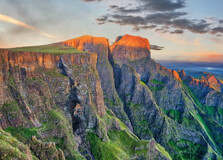
Ukhahlamba Drakensberg Park, located in KwaZulu-Natal, South Africa, is a UNESCO World Heritage Site known for its breathtaking natural beauty and immense cultural significance. Covering over 240,000 hectares, the park is part of the majestic Drakensberg Mountain Range, the highest in Southern Africa. It is renowned for its dramatic peaks, rich biodiversity, crystal-clear streams, waterfalls, and the largest collection of rock art in Africa, created by the San people over a period of 4,000 years. How to Reach Ukhahlamba Drakensberg Park, KwaZulu-Natal The park is accessible by road from major cities in KwaZulu-Natal and the surrounding provinces: By Car from Durban: The park is approximately 250 km (3-4 hours' drive) northwest of Durban. Take the N3 highway towards Pietermaritzburg and follow signs toward towns like Winterton, Underberg, or Bergville, depending on which section of the park you're visiting. By Car from Johannesburg: It's about 400-500 km (5-6 hours) south of Johannesburg, depending on the entry point. By Air: The nearest major airport is King Shaka International Airport in Durban. From there, you can rent a car to drive to the park. By Bus/Tour: Several tour operators offer group trips or private tours to the park with accommodation and activities included. Weather at Ukhahlamba Drakensberg Park The park has a temperate mountain climate: Summer (November to March): Warm and rainy with daytime temperatures between 20°C and 30°C. Thunderstorms are common in the afternoons. Winter (May to August): Cold and dry, with daytime highs around 15°C and freezing temperatures at night. Snow may fall on higher peaks. The best time to visit is during the dry months from May to September for hiking and rock art viewing. Spring (September to October) offers blooming wildflowers and moderate weather. Timings to Visit The park is open year-round. Most access gates are open daily from 6:00 AM to 6:00 PM. Specific opening hours may vary slightly by region (e.g., Royal Natal, Cathedral Peak, Giant's Castle). It is advisable to arrive early in the day for hikes and outdoor activities, especially in summer when afternoon storms can develop quickly. Why Famous for Ukhahlamba Drakensberg Park, KwaZulu-Natal? The park is famous for: San Rock Art: Home to over 600 rock art sites and 35,000 individual paintings, making it the largest and most concentrated group of rock paintings in Africa south of the Sahara. Spectacular Scenery: Towering basalt cliffs, lush valleys, waterfalls, and rolling foothills create an awe-inspiring natural landscape. World Heritage Status: Recognized by UNESCO for both natural and cultural value. Biodiversity: A hotspot for endemic species of plants, birds, and mammals. Entry and Visit Details Entry fees vary depending on the section of the park: Adults: Approx. R65 – R90 per person Children: Approx. R35 – R50 per child The park is divided into multiple areas with separate entrances, including Giant’s Castle, Royal Natal, Cathedral Peak, and Kamberg. Each has its own visitor centre, hiking trails, and facilities. Camping sites, chalets, and lodges are available for overnight stays, often with advance booking required. History and Architecture Ukhahlamba means "Barrier of Spears" in Zulu, reflecting the rugged and imposing nature of the mountain range. The San people inhabited the area for thousands of years, leaving behind a priceless legacy of rock paintings that depict daily life, animals, and spiritual beliefs. Though the park does not have classical architectural structures, it is rich in ancient cultural expressions carved and painted onto the rock faces of caves and overhangs. Rangers and cultural guides help interpret this heritage during guided tours. Things to Do at Ukhahlamba Drakensberg Park Hiking: Trails range from easy walks to challenging multi-day treks. Popular routes include the Amphitheatre hike in Royal Natal and the climb to the Tugela Falls. Rock Art Tours: Visit San rock painting sites with expert guides, particularly at Kamberg and Giant’s Castle. Bird Watching: Spot the endangered bearded vulture and many endemic species. Horse Riding: Several lodges offer horseback trails through the foothills. Photography: The park is a photographer’s paradise with dramatic landscapes, sunrises, and wildlife. Camping and Star Gazing: Camp under clear skies and enjoy one of the best natural observatories in the region. Facts about Ukhahlamba Drakensberg Park The park spans over 240,000 hectares and links to the Maloti Mountains in Lesotho, forming the transfrontier Maloti-Drakensberg Park. Tugela Falls, one of the tallest waterfalls in the world (948 meters), is located in the Royal Natal section. The San rock art dates back thousands of years and is well preserved due to the dry mountain climate. Home to more than 2,500 plant species, including many endemic to the region. Declared a World Heritage Site in 2000 for its natural beauty and cultural significance. Tips about Ukhahlamba Drakensberg Park, KwaZulu-Natal Wear layered clothing as temperatures can vary greatly throughout the day. Always carry water, sunscreen, a map, and weatherproof gear when hiking. Book guided rock art tours for in-depth understanding of San culture. Some trails and campsites require permits—check in advance. Travel in groups or inform someone of your hiking route and return time. Cell phone signal may be limited in some remote areas—carry a GPS or compass. Respect wildlife and do not disturb or damage any rock art or natural features.
Explore More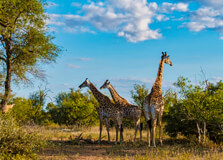
Kruger National Park, located in the Limpopo province of South Africa, is one of the largest game reserves in Africa. Covering an area of nearly 20,000 square kilometers, the park is home to a wide variety of wildlife, including the famous Big Five - lions, leopards, elephants, rhinos, and buffaloes. The park was established in 1926 and named after Paul Kruger, a former president of the South African Republic. Location and Geographical Overview Kruger National Park is situated in northeastern South Africa, bordering Zimbabwe and Mozambique. The park encompasses diverse landscapes, including open savannah, dense forests, and rolling hills. The Crocodile River runs along the southern boundary of the park, providing water for the wildlife that inhabits it. Open and Closing Time The park is open to visitors from sunrise to sunset, with specific entrance gates having varying opening and closing times. It is important to check the official website for the most up-to-date information on operating hours. Entry Fee There is an entrance fee for visitors to Kruger National Park, with rates varying for South African residents, SADC (Southern African Development Community) nationals, and international tourists. It is recommended to purchase entry permits in advance to avoid delays at the gates. Species-Flora/Fauna Availability Kruger National Park is renowned for its rich biodiversity, with over 500 bird species, 147 mammal species, and countless plant varieties. Visitors have the opportunity to spot a wide array of wildlife, from rare birds to large predators, making it a paradise for nature lovers and wildlife enthusiasts. Activities Performed There are numerous activities to enjoy within the park, including game drives, guided walks, birdwatching, and wilderness trails. Visitors can also visit cultural heritage sites and attend educational programs to learn more about the park's conservation efforts. Jeep Safari Charges Jeep safaris are a popular way to explore Kruger National Park, allowing visitors to get up close to wildlife in their natural habitat. The park offers guided safari tours, with prices varying depending on the duration and type of safari chosen. Age Criterion and Entry Fee Entry fees for Kruger National Park are typically based on age and nationality. Children under a certain age may enter for free, while discounted rates are often available for senior citizens. It is advisable to check the official website for the most current pricing information. Senior Citizen Facilities Kruger National Park offers facilities and services tailored to the needs of senior citizens, including accessible accommodation, transportation, and guided tours. Special discounts may also be available for older visitors, making it easier for them to enjoy their visit to the park. Best Time to Visit The best time to visit Kruger National Park is during the dry season, from May to September, when vegetation is sparse, and wildlife congregates around water sources. This period offers optimal game viewing opportunities and comfortable weather conditions for outdoor activities. Nearby Places to Visit There are several nearby attractions to explore while visiting Kruger National Park, including Blyde River Canyon, Bourke's Luck Potholes, and the Panorama Route. These natural wonders offer stunning views and unique geological formations that are worth seeing during your trip. Vehicle Parking Facility Kruger National Park provides designated parking areas at its entrance gates, rest camps, and popular attractions within the park. Visitors are advised to lock their vehicles and refrain from leaving any valuable items inside to prevent theft or damage. Rules and Regulations Visitors to Kruger National Park are required to adhere to strict rules and regulations to ensure the safety of wildlife and maintain the park's pristine environment. This includes staying on designated roads, refraining from feeding animals, and respecting the natural habitat of the wildlife. How to Reach and Other Related Information Kruger National Park can be accessed by road, air, or organized tours from major cities in South Africa. The closest airports are in Nelspruit and Hoedspruit, with options for shuttle services to the park. It is recommended to plan your visit in advance and book accommodations within the park or nearby lodges for a seamless experience. With its diverse landscapes, abundant wildlife, and conservation efforts, Kruger National Park offers a memorable safari experience for visitors of all ages. Whether you are a nature enthusiast, adventure seeker, or simply looking to immerse yourself in the beauty of the African bush, a trip to this iconic park is sure to leave you in awe of the natural world.
Explore More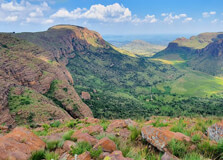
Located in Limpopo, South Africa, Marakele National Park is a breathtaking natural sanctuary that offers visitors the chance to experience the beauty of the African wilderness up close. The name "Marakele" means 'a place of sanctuary' in Tswana, and this park truly lives up to its name, providing a safe haven for a wide variety of wildlife. Location and Geographical Overview Marakele National Park covers an area of approximately 67,000 hectares and is situated in the Waterberg region of Limpopo. The park is characterized by dramatic landscapes, including towering mountains, lush valleys, and winding rivers. The diverse terrain creates a variety of habitats that support a rich array of plant and animal species. Open and Closing Time The park is open to visitors from 6:00 am to 6:00 pm daily. Entry Fee The entry fee for Marakele National Park is R100 for adults and R50 for children under 12 years old. South African citizens and residents enjoy a discounted rate of R40 for adults and R20 for children. Species-Flora/Fauna Availability Marakele National Park is home to a diverse range of flora and fauna. Visitors can expect to see iconic African wildlife such as elephants, lions, rhinos, and giraffes, as well as a variety of bird species. The park also boasts a number of unique plant species, including the rare cycads that dot the landscape. Activities Performed Visitors to Marakele National Park can enjoy a range of activities, including guided game drives, hiking trails, and birdwatching. The park also offers camping facilities for those who wish to spend the night in the wilderness. Jeep Safari Charges Jeep safari charges vary depending on the duration of the safari and the number of participants. Prices typically range from R300 to R1000 per person. Age Criterion for Male, Female, Children and their Entry Fee Adult entry fees apply to individuals aged 12 and above. Children under 12 years old receive a discounted rate. There is no specific age criterion for male or female visitors. Senior Citizen Facilities Senior citizens may be eligible for discounted entry fees, depending on their age and residency status. The park also offers facilities such as wheelchair access and designated rest areas for elderly visitors. Best Time to Visit The best time to visit Marakele National Park is during the dry season, from May to September, when wildlife congregates around water sources, making for excellent game viewing opportunities. Nearby Places to Visit Visitors to Marakele National Park can explore the surrounding area and visit attractions such as the picturesque town of Thabazimbi, the Marakele Predator Centre, and the Waterberg Biosphere Reserve. Vehicle Parking Facility The park offers designated parking areas for visitors, with ample space for both cars and buses. Overnight guests can park their vehicles at the designated camping sites. Rules and Regulations Visitors to Marakele National Park are required to adhere to a set of rules and regulations to ensure the safety of both wildlife and fellow visitors. Some of the key rules include staying on designated roads and trails, refraining from feeding or approaching wildlife, and properly disposing of waste. How to Reach and Other Related Information Marakele National Park is easily accessible by road from major cities such as Johannesburg and Pretoria. The park is located approximately 250 km from Johannesburg and can be reached via the N1 highway. Visitors can also fly into nearby airports such as Tambo International Airport in Johannesburg and arrange for transportation to the park. For more information on visiting Marakele National Park, including accommodation options, guided tours, and special events, visitors are encouraged to contact the park's visitor center or visit the official park website.
Explore More
Mapungubwe National Park is a UNESCO World Heritage Site located in the Limpopo Province of South Africa. The park is known for its rich biodiversity, cultural heritage, and stunning landscapes. It covers an area of 28,000 hectares and is home to a wide variety of wildlife, including elephants, lions, leopards, and more. Location and Geographical Overview The park is situated at the confluence of the Limpopo and Shashe Rivers, near the border with Botswana and Zimbabwe. It is characterized by sandstone cliffs, mopane woodlands, and rocky outcrops. The park's diverse habitats support a wide range of plant and animal species. Opening and Closing Time The park is open daily from 6:00 am to 6:00 pm, with the last entry at 4:00 pm. The park may have seasonal variations in opening hours, so it is advisable to check the official website before planning your visit. Entry Fee The entry fee for Mapungubwe National Park is R50 for South African residents and R100 for international visitors. Children under the age of 12 enter for free. Species-Flora/Fauna Availability The park is home to a diverse range of wildlife, including elephants, giraffes, zebras, and various antelope species. Birdwatchers will also be delighted by the park's resident bird species, which include kingfishers, eagles, and hornbills. The park is also known for its unique baobab trees and other indigenous flora. Activities Performed Visitors to Mapungubwe National Park can enjoy a variety of activities, including game drives, guided walks, and birdwatching. There are also picnic sites and viewpoints where visitors can relax and take in the park's breathtaking scenery. Jeep Safari Charges Jeep safari charges vary depending on the duration and type of safari. Prices typically range from R300 to R1000 per person, with discounts available for groups and children. Age Criterion for Male, Female, Children and Their Entry Fee The entry fee for male and female visitors is the same, with children under 12 entering for free. Children between the ages of 12 and 18 pay a reduced fee of R25. Senior citizens over the age of 60 also receive a discount on their entry fee. Senior Citizen Facilities Mapungubwe National Park offers special facilities for senior citizens, including designated parking areas, wheelchair access, and discounted entry fees. Visitors are encouraged to inquire at the park's entrance gate for assistance and information on available facilities. Best Time to Visit The best time to visit Mapungubwe National Park is during the dry season, which runs from May to September. During this time, the weather is cooler, and wildlife is more easily spotted near water sources. The park is also less crowded, allowing for a more peaceful and enjoyable experience. Nearby Places to Visit There are several attractions near Mapungubwe National Park that visitors can explore, including the Mapungubwe Cultural Landscape, the Great Zimbabwe Ruins, and the Tuli Block Game Reserve. These sites offer additional opportunities to learn about the history and culture of the region. Vehicle Parking Facility The park has designated parking areas for visitors, including secure parking for vehicles and trailers. Parking is included in the entry fee, and attendants are available to assist visitors with parking and directions. Rules and Regulations Visitors to Mapungubwe National Park are expected to adhere to the park's rules and regulations, which include respecting wildlife and natural habitats, refraining from littering, and following designated trails and roads. Camping and fires are only permitted in designated areas, and feeding or approaching wildlife is strictly prohibited. How to Reach and Other Related Information Mapungubwe National Park is easily accessible by road from major cities like Johannesburg and Pretoria. The park is approximately a 5-hour drive from Johannesburg and offers well-maintained roads for visitors. Accommodation options are available both inside the park and in nearby towns, making it convenient for visitors to plan their stay. For more information on how to reach the park and other related details, visitors can visit the official website or contact the park's administration for assistance.
Explore More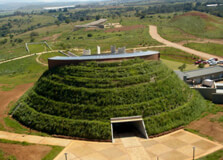
The Cradle of Humankind is a UNESCO World Heritage Site located in Gauteng, South Africa. It is known for its rich fossil heritage, which provides valuable insights into the history of human evolution. The site is home to a network of limestone caves that have yielded numerous fossilized remains of early hominids, as well as other animals and plants from millions of years ago. Location and Geographical Overview The Cradle of Humankind is situated approximately 50 kilometers northwest of Johannesburg and covers an area of around 47,000 hectares. It is characterized by rolling hills, open grasslands, and rocky outcrops, making it a picturesque and unique landscape to explore. Opening and Closing Time The Cradle of Humankind is open to visitors daily from 9:00 am to 5:00 pm. It is advisable to check the official website or contact the visitor center for any changes in operating hours before planning your visit. Entry Fee The entry fee for adults is R120 (South African Rand), while children under the age of 18 and senior citizens over the age of 60 can enjoy a discounted rate of R65. It is important to note that prices are subject to change, so it is recommended to check the latest rates before your visit. Species - Flora/Fauna Availability The Cradle of Humankind is home to a diverse range of plant and animal species, including indigenous trees, grasses, and wildlife such as antelope, zebras, and various bird species. Visitors can enjoy guided tours and walks to observe the local flora and fauna in their natural habitat. Activities Performed Visitors to the Cradle of Humankind can engage in a variety of activities, including guided tours of the fossil sites, hiking trails, birdwatching, and educational programs at the visitor center. The site also offers opportunities for picnicking and exploring the surrounding landscapes. Jeep Safari Charges For those looking to explore the Cradle of Humankind in style, jeep safari tours are available at an additional cost. Prices for jeep safari tours vary depending on the duration and itinerary, so it is recommended to inquire at the visitor center for more information. Age Criterion and Entry Fee Entry fees for the Cradle of Humankind are as follows: - Adults: R120 - Children (under 18): R65 - Senior Citizens (over 60): R65 Children under the age of 6 can enter for free. It is important to carry identification to verify age and eligibility for discounted rates. Senior Citizen Facilities The Cradle of Humankind offers facilities and services tailored to the needs of senior citizens, including accessible pathways, seating areas, and guided tours catered to a more leisurely pace. Visitors are encouraged to inform staff members of any special requirements to ensure a comfortable and enjoyable experience. Best Time to Visit The Cradle of Humankind can be visited throughout the year, but the best time to explore the site is during the cooler months of autumn (March-May) and spring (September-November). These seasons offer pleasant weather conditions for outdoor activities and sightseeing. Nearby Places to Visit While in the Cradle of Humankind area, visitors can also explore other attractions such as the Maropeng Visitor Centre, Sterkfontein Caves, and Rhino and Lion Nature Reserve. These nearby sites offer additional opportunities to learn about the region's natural and cultural heritage. Vehicle Parking Facility There is ample parking available at the Cradle of Humankind for visitors arriving by car or tour bus. Parking facilities are conveniently located near the visitor center and entrance gates, with designated spaces for disabled visitors. Parking fees may apply, so it is advisable to check with staff or signage for more information. Rules and Regulations Visitors to the Cradle of Humankind are expected to adhere to the following rules and regulations: - Respect for the environment and wildlife - No littering or vandalism - Follow designated pathways and trails - Observe any guidelines provided by staff - Photography restrictions in certain areas - Pets are not allowed By following these guidelines, visitors can help preserve the site for future generations to enjoy. How to Reach and Other Related Information The Cradle of Humankind is easily accessible by car from Johannesburg or Pretoria, with well-maintained roads leading to the site. Public transportation options are also available, such as shuttle services and guided tours departing from major cities and towns. For more information on how to reach the Cradle of Humankind and to plan your visit, consult the official website or contact the visitor center for assistance.
Explore More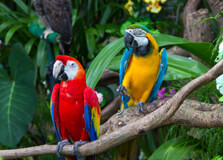
The Umgeni River Bird Park, located in Durban, South Africa, is a renowned sanctuary for a vast array of bird species from around the globe. Situated on the banks of the Umgeni River, this lush and vibrant park offers visitors a unique opportunity to observe and appreciate the beauty and diversity of avian life. With its walk-through aviaries, stunning waterfalls, and tranquil environment, the park has become a must-visit destination for bird enthusiasts, nature lovers, and families alike. How to reach Umgeni River Bird Park, Durban Umgeni River Bird Park is conveniently located approximately 10 minutes north of Durban's city center. Several transportation options are available to reach the park: By Car: The easiest way to reach the park is by car. From Durban city center, take the M4 North and follow the signs to the park. Ample parking is available at the venue. By Taxi: Taxis are readily available in Durban and offer a direct route to the bird park. The journey from the city center typically takes around 7 minutes. By Walking: For those staying nearby, it is possible to walk to the park, although it is a distance of around 7.4 kilometers from the city center, which would take approximately 1 hour and 30 minutes. Weather in Durban Durban enjoys a subtropical climate characterized by warm, humid summers and mild, dry winters. The summer months (December to February) see average high temperatures around 30°C, with high humidity and occasional rainfall. The winter months (June to August) are generally sunny and pleasant, with average daytime temperatures around 23°C. The Umgeni River Bird Park is an outdoor attraction, so it's advisable to check the weather forecast before your visit and dress accordingly. During summer, it's recommended to stay hydrated and wear sunscreen. Even in winter, it's wise to wear layers as temperatures can fluctuate throughout the day. Timing While specific daily opening and closing times might vary, the Umgeni River Bird Park is generally open to the public during standard daytime hours. It's always best to check the official website or contact the park directly for the most up-to-date information on operating hours before planning your visit. This will ensure you have ample time to explore all the park has to offer. Why famous for Umgeni River Bird Park, Durban? Umgeni River Bird Park is famous for several compelling reasons: Extensive Collection of Birds: The park is home to over 300 species of birds from various parts of the world, including many rare and exotic species. This makes it a prime location for birdwatching and ornithological studies. Walk-through Aviaries: The large, walk-through aviaries allow visitors to immerse themselves in the birds' natural habitat, providing an up-close and personal experience. Beautiful Setting: Situated in a former quarry, the park boasts stunning natural features such as waterfalls, rock faces, and lush vegetation, creating a picturesque and tranquil environment. Educational Value: The park plays a crucial role in conservation and education, raising awareness about the importance of protecting birdlife and their habitats. Bird Shows: The park often features captivating bird flight shows, showcasing the intelligence and agility of various bird species. Entry and visit details about Umgeni River Bird Park, Durban For the most accurate and current information regarding entry fees and visit details, it is recommended to check the official website of the Umgeni River Bird Park or contact them directly. Generally, you can expect to find different ticket prices for adults, children, and possibly senior citizens or groups. The park may also offer annual memberships. Upon entry, visitors can explore the various aviaries and exhibits at their own pace. Guided tours might also be available for those seeking a more in-depth experience. It's advisable to wear comfortable walking shoes as the park covers a significant area. History The Umgeni River Bird Park has a fascinating history. It was the vision of Dr. Alan Abrey, who designed and built the park. The location itself is significant, as it was once an old quarry site. Dr. Abrey remembered this site from his childhood in Durban, recognizing its potential as a unique and suitable environment for a bird park. The park officially opened on March 30, 1984, and has since grown into a prominent conservation and tourist attraction in Durban. Architecture The architecture of the Umgeni River Bird Park is thoughtfully designed to blend seamlessly with the natural landscape of the former quarry. The aviaries are spacious and designed to mimic the natural habitats of the birds, providing them with a comfortable and stimulating environment. The pathways and viewing areas are integrated into the terrain, allowing visitors to explore the park while appreciating the natural rock formations and waterfalls. The use of natural materials and the incorporation of lush vegetation further enhance the park's aesthetic appeal and create a sense of immersion in nature. Things to do There are numerous engaging activities to enjoy at the Umgeni River Bird Park: Explore the Aviaries: Wander through the various walk-through aviaries and observe a diverse range of bird species up close. Attend Bird Shows: Witness the spectacular bird flight shows where trained birds demonstrate their natural abilities. Enjoy the Scenery: Admire the beautiful waterfalls, rock faces, and lush gardens throughout the park. Photography: Capture stunning photographs of the colorful birds and the picturesque surroundings. Relax and Picnic: Find a peaceful spot to relax and enjoy a picnic amidst the natural beauty. Educational Opportunities: Learn about different bird species, their habitats, and conservation efforts. Visit the Tea Garden: Enjoy refreshments at the park's tea garden. Facts about Umgeni River Bird Park, Durban The park is home to over 300 bird species from around the world. It was built on the site of an old quarry. The park was designed and built by Dr. Alan Abrey. It opened to the public in 1984. The park plays an important role in bird conservation and education. It features several walk-through aviaries, allowing for close encounters with the birds. The park's landscape includes waterfalls and natural rock formations. Tips about Umgeni River Bird Park, Durban Wear comfortable walking shoes as you'll be doing a fair amount of walking. Bring sunscreen and a hat, especially during the summer months. Stay hydrated by carrying a water bottle. Check the schedule for bird shows and plan your visit accordingly. Bring your camera to capture the beautiful birds and scenery. Be patient and quiet when observing the birds to avoid disturbing them. Consider visiting during the cooler parts of the day, especially in summer. Check the park's official website for the latest information on opening hours and entry fees. Respect the park's rules and regulations to ensure the well-being of the birds and the environment.
Explore More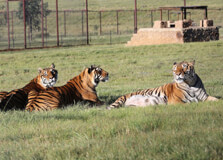
The Bloemfontein Zoo, also known as the Franklin Game Reserve, is a popular tourist destination located in Bloemfontein, South Africa. Founded in 1920, the zoo covers an area of approximately 250 acres and is home to a variety of wildlife species. Location and Geographical Overview The Bloemfontein Zoo is situated at 101 Ray Champion Drive, Bloemfontein, Free State, South Africa. It is located near the city center, making it easily accessible to both locals and tourists. Open and Closing Time The Bloemfontein Zoo is open to visitors from 8:00 am to 5:00 pm daily, including weekends and public holidays. Entry Fee The entry fee for adults is R60, while children under the age of 12 can enter for R30. Senior citizens and students with valid ID can enter for R40. Species - Flora/Fauna Availability The Bloemfontein Zoo is home to a diverse range of flora and fauna, including various species of birds, mammals, reptiles, and plant life. Visitors can explore the different habitats and learn about the conservation efforts being made to protect these species. Activities Performed Visitors to the Bloemfontein Zoo can enjoy a range of activities such as guided tours, animal feeding sessions, and educational programs. There are also picnic areas and playgrounds for families to relax and enjoy the outdoors. Jeep Safari Charges The Bloemfontein Zoo does not offer jeep safari tours at this time. Age Criterion for Male, Female, Children and Their Entry Fee The entry fees for the Bloemfontein Zoo are the same for males and females. Children under 12 years old have a reduced entry fee. Senior citizens and students with valid ID also have a discounted rate. Senior Citizen Facilities Senior citizens visiting the Bloemfontein Zoo can enjoy discounted entry fees and access to wheelchair-friendly pathways around the park. There are also rest areas and seating available throughout the zoo. Best Time to Visit The best time to visit the Bloemfontein Zoo is during the cooler months of the year, from March to November. The weather is more pleasant, and the animals are usually more active during this time. Nearby Places to Visit There are several other attractions near the Bloemfontein Zoo that visitors can explore, including the National Museum, Naval Hill Planetarium, and Oliewenhuis Art Museum. These attractions offer a variety of cultural and historical experiences. Vehicle Parking Facility The Bloemfontein Zoo offers ample parking space for visitors arriving by car. There is a designated parking area near the entrance where visitors can safely park their vehicles. Rules and Regulations Visitors to the Bloemfontein Zoo are required to follow certain rules and regulations to ensure the safety of the animals and other guests. These rules include no smoking, no littering, no feeding of the animals, and staying on designated pathways. How to Reach and Other Related Information The Bloemfontein Zoo is easily accessible by car, taxi, or public transportation. The nearest airport is Bloemfontein Airport, which is approximately a 15-minute drive away. Visitors can also book guided tours or transportation services through the zoo's website.
Explore More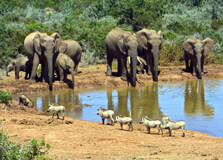
About Addo Elephant National Park Addo Elephant National Park is a renowned wildlife reserve located near Port Elizabeth in the Eastern Cape province of South Africa. The park was established in 1931 to protect the last remaining 11 African elephants in the area. Today, it is home to over 600 elephants as well as other wildlife species. Location and Geographical Overview The Addo Elephant National Park spans across an area of approximately 1,640 square kilometers and is situated about 72 kilometers north of Port Elizabeth. The park encompasses a variety of landscapes including dense forests, rolling hills, and open savannah, providing a diverse habitat for its wildlife inhabitants. Opening and Closing Time The park is open daily from 7:00 am to 6:30 pm. Entry Fee The entry fee for international visitors is R328 per adult and R164 per child. South African citizens pay R76 per adult and R38 per child. Species - Flora/Fauna Availability Aside from elephants, Addo Elephant National Park is home to a wide array of wildlife including lion, buffalo, rhinoceros, leopard, and various antelope species. The park also boasts diverse flora such as spekboom, euphorbias, and a variety of indigenous trees and shrubs. Activities Performed Visitors to the park can enjoy activities such as guided game drives, self-drive safaris, bird watching, hiking trails, and horseback safaris. The park also offers accommodation options for overnight stays. Jeep Safari Charges Jeep safari charges vary depending on the type of safari experience chosen. Prices typically range from R600 to R1200 per person for a guided safari. Age Criterion and Entry Fee Children under the age of 2 enter the park for free. The entry fee for children aged 2-11 is R82 for international visitors and R41 for South African citizens. For visitors aged 12 and above, the adult entry fee applies. Senior Citizen Facilities Senior citizens are eligible for discounted entry fees. South African citizens over the age of 60 can enjoy reduced rates upon presentation of a valid ID. Best Time to Visit The best time to visit Addo Elephant National Park is during the dry winter months from May to September when wildlife congregates around waterholes, making for excellent game viewing opportunities. Nearby Places to Visit Some nearby attractions to Addo Elephant National Park include the Zuurberg Mountain Village, the Daniell Cheetah Project, and the town of Kirkwood known for its citrus orchards. Vehicle Parking Facility The park offers designated parking areas for visitors at various points within the park. Parking is free of charge. Rules and Regulations Visitors are required to follow certain rules and regulations while inside the park such as maintaining a safe distance from wildlife, refraining from feeding the animals, and adhering to speed limits on the roads. How to Reach and Other Related Information Addo Elephant National Park is accessible by car from Port Elizabeth via the N2 highway. The park is approximately a one-hour drive from Port Elizabeth. Alternatively, guided tours and shuttle services are available for visitors without their own transportation.
Explore More
About Freedom Park Freedom Park is a significant heritage site located in Pretoria, South Africa. It was established with the aim of honoring those who sacrificed their lives for the freedom of the nation and celebrating South Africa's diverse cultural heritage. The park serves as a symbol of unity and reconciliation in the country. Location and Geographical Overview Freedom Park is situated on Salvokop Hill in Pretoria, offering panoramic views of the city and surrounding landscapes. The park covers an area of 52 hectares and features various monuments, gardens, and sculptures that represent the country's history and cultural diversity. Open and Closing Time Freedom Park is open to visitors from 8:00 am to 4:30 pm daily. It is advisable to arrive early to make the most of your visit and explore the park at your leisure. Entry Fee There is no entry fee to access Freedom Park, making it an affordable destination for both locals and tourists to experience the rich heritage and natural beauty of South Africa. Species-Flora/Fauna Availability Freedom Park is home to a variety of indigenous plant species, creating a tranquil and scenic environment for visitors to enjoy. The park also supports diverse wildlife, including birds, insects, and small mammals that thrive in the natural surroundings. Activities Performed Visitors to Freedom Park can engage in a range of activities, such as guided tours, nature walks, picnics, and cultural events. The park offers educational programs and interactive exhibits that provide insight into the country's history and heritage. Jeep Safari Charges Freedom Park does not offer jeep safari experiences. However, visitors can explore the park on foot and discover its various attractions at their own pace. Age Criterion and Entry Fee There are no specific age restrictions for entry to Freedom Park. Children under a certain age may be admitted free of charge, while adults may be required to pay a nominal fee to access certain areas or exhibits within the park. Senior Citizen Facilities Freedom Park is accessible to senior citizens and offers facilities such as benches, shaded areas, and wheelchair access to ensure a comfortable and enjoyable visit for older visitors. Best Time to Visit The best time to visit Freedom Park is during the spring months of September to November when the weather is mild, and the gardens are in full bloom. Avoid visiting during the hot summer months, as temperatures can be uncomfortably high. Nearby Places to Visit While in Pretoria, visitors can explore other attractions such as the Voortrekker Monument, Union Buildings, and National Zoological Gardens. These sites are located in close proximity to Freedom Park and offer additional opportunities for sightseeing and cultural experiences. Vehicle Parking Facility Freedom Park provides parking facilities for visitors, ensuring convenient access to the park. There may be a nominal fee for parking, depending on the duration of your visit. Rules and Regulations Visitors to Freedom Park are expected to respect the site's heritage and cultural significance by following these rules: - No littering or vandalism - No feeding of wildlife - No loud music or disruptive behavior - No unauthorized access to restricted areas - No smoking in designated non-smoking zones How to Reach and Other Related Information Freedom Park is easily accessible by car, taxi, or public transportation from Pretoria city center. The park is located approximately 5 kilometers from the central business district and can be reached via major roads such as Nelson Mandela Drive and Struben Street. Visitors can also arrange guided tours or transportation services through local tour operators for a hassle-free visit to the park. Overall, Freedom Park offers a unique and immersive experience for visitors seeking to learn about South Africa's history, culture, and natural environment. With its stunning views, educational exhibits, and peaceful surroundings, the park is a must-visit destination for anyone interested in exploring the rich heritage of the country.
Explore More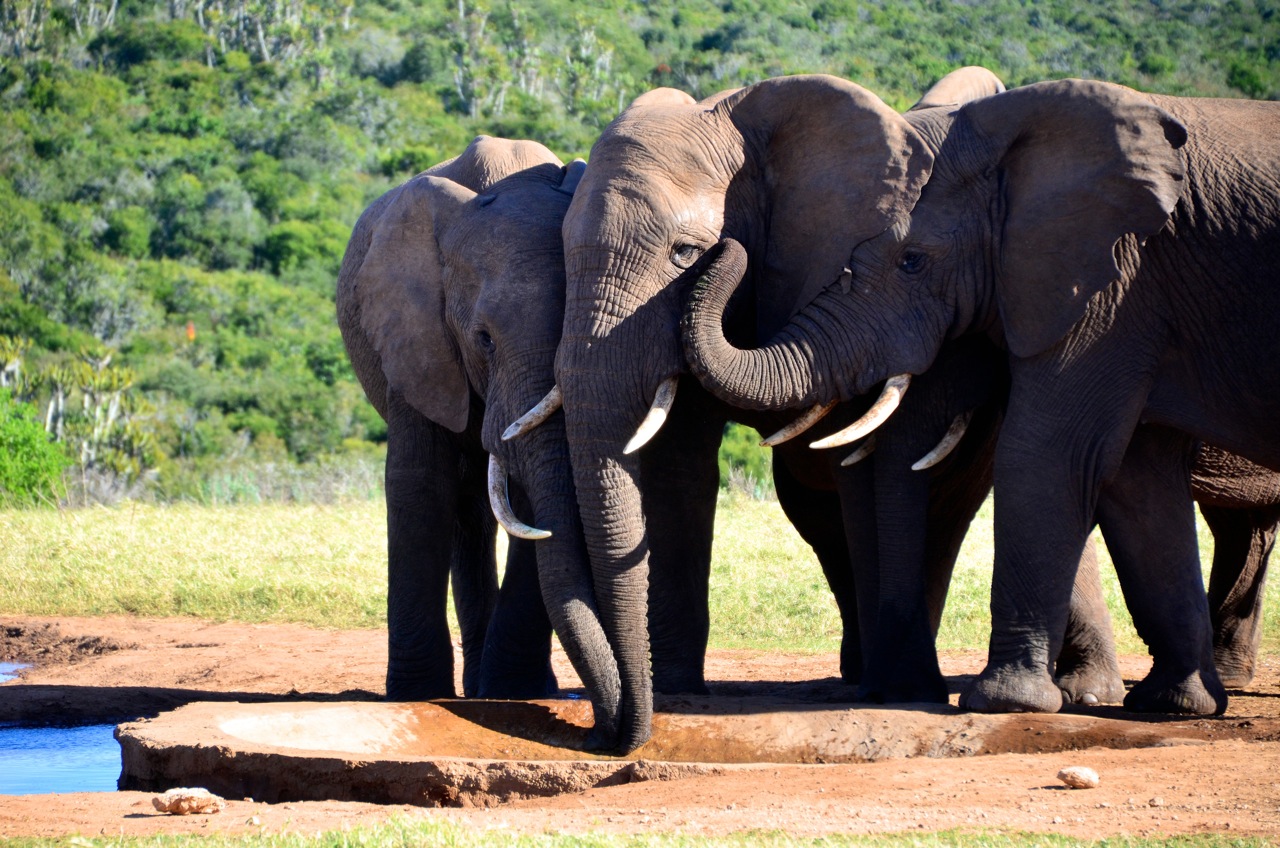
Addo Elephant Park, located in the Eastern Cape of South Africa, is a renowned national park known for its diverse wildlife and impressive population of elephants. With an area of over 1,640 square kilometers, the park offers visitors the opportunity to observe a wide variety of flora and fauna in their natural habitat. Location and Geographical Overview Addo Elephant Park is situated near the town of Addo, approximately 72 kilometers north of Port Elizabeth in the Eastern Cape province of South Africa. The park is nestled in the Sundays River Valley and features a mix of dense forest, open grasslands, and rugged hills that provide a suitable habitat for a range of wildlife. Open and Closing Time The park is typically open to visitors from 7:00 AM to 6:30 PM, allowing ample time for exploration and wildlife spotting. It is advisable to check the official website or contact the park directly for the most up-to-date information on operating hours. Entry Fee Entry fees to Addo Elephant Park vary depending on the type of visitor and the duration of stay. International visitors typically pay a higher fee compared to South African residents. It is recommended to check the official website for accurate pricing information. Species-Flora/Fauna Availability Addo Elephant Park is known for its diverse range of wildlife, including the iconic elephants for which the park is named. Visitors may also spot other animals such as lions, buffalo, rhinos, and various antelope species. The park is also home to a variety of bird species, making it a paradise for birdwatchers. Activities Performed Visitors to Addo Elephant Park can participate in a wide range of activities, including guided game drives, walking safaris, birdwatching, and hiking trails. The park also offers picnic areas and accommodation options for those looking to stay overnight. Jeep Safari Charges Jeep safari charges at Addo Elephant Park vary depending on the duration and type of safari experience chosen. Visitors can opt for guided tours led by experienced rangers who provide insights into the park's wildlife and history. It is advisable to book safari tours in advance to secure a spot. Age Criterion for Male, Female, Children and their Entry Fee The park usually offers discounted entry fees for children and senior citizens, while adult fees apply to male and female visitors. Children under a certain age may be granted free entry, while those above a certain age may be eligible for senior citizen discounts. It is recommended to check the park's official website for detailed age criteria and pricing. Senior Citizen Facilities Addo Elephant Park provides facilities and services tailored to the needs of senior citizens, including wheelchair-accessible paths, designated rest areas, and discounted entry fees. The park staff are trained to assist elderly visitors and ensure their comfort and safety during their visit. Best Time to Visit The best time to visit Addo Elephant Park is during the dry season, from May to September, when wildlife congregates around water sources, making them easier to spot. However, the park is open year-round, and each season offers unique experiences for visitors to enjoy. Nearby Places to Visit While exploring Addo Elephant Park, visitors can also consider visiting nearby attractions such as the Zuurberg Mountain Range, the coastal town of Port Elizabeth, and the charming town of Addo with its local markets and historical sites. These destinations offer a diverse range of experiences that complement a visit to the park. Vehicle Parking Facility Addo Elephant Park provides designated parking areas for visitors arriving by car. The parking facilities are secure and easily accessible, allowing visitors to explore the park without worrying about the safety of their vehicles. It is advisable to follow the park's guidelines on parking to ensure a pleasant experience for all visitors. Rules and Regulations When visiting Addo Elephant Park, it is important to abide by the park's rules and regulations to ensure the safety of both visitors and wildlife. Some common rules include refraining from feeding the animals, staying inside designated viewing areas, and respecting the natural environment. By following these guidelines, visitors can enjoy a responsible and sustainable wildlife viewing experience. How to Reach and Other Related Information Addo Elephant Park is easily accessible by road from major cities such as Port Elizabeth, which is approximately a one-hour drive away. Visitors can also opt for guided tours or self-drive options to reach the park. It is advisable to plan ahead and check the park's official website for detailed directions and additional information on accommodation, dining options, and activities available within the park.
Explore MoreLuxury South African Safari
7 Days/ 6 Night
Limpopo - Johannesburg - Kapama
10 Day Youth Leadership Tour Itinerary For South Africa
10 Days/ 9 Night
Cape Town - Johannesburg
30 Days Volunteer Program South Africa Tour
30 Days/ 29 Night
Garden Route - Cape Town - Johannesburg
Special Needs Family Tour - Cape Town
8 Days/ 7 Night
Cape Town
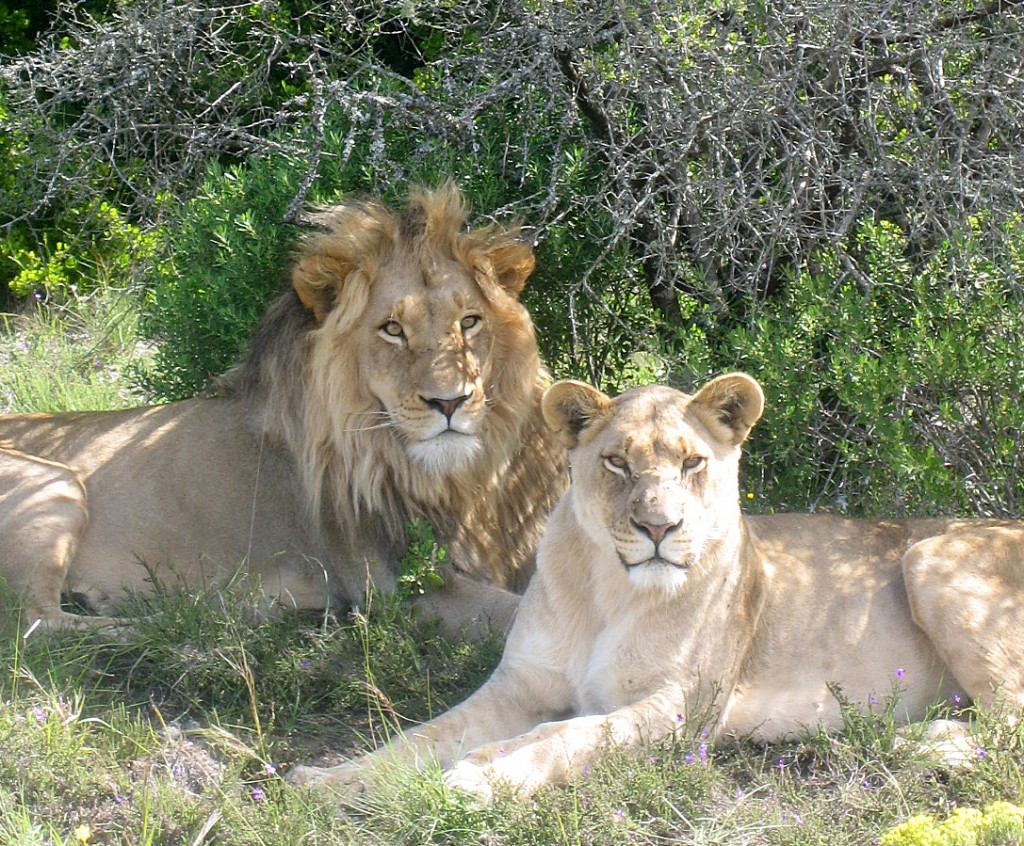
The Amakhala Game Reserve is located in the Eastern Cape of South Africa, near the town of Paterson. It covers over 18,000 acres of pristine wilderness and is home to a wide variety of wildlife species. Location and Geographical Overview The Amakhala Game Reserve is situated along the Bushmans River, providing a diverse landscape of plains, forests, and valleys. The reserve is part of a larger conservation area, allowing animals to roam freely in their natural habitat. Open and Closing Time The game reserve is open daily from 6:00 AM to 9:00 PM, allowing visitors to explore and experience the wildlife throughout the day and into the evening. Entry Fee The entry fee for the Amakhala Game Reserve varies depending on the type of experience you choose, ranging from day visits to luxury accommodations. Prices start at $50 per person for a day visit. Species-Flora/Fauna Availability The Amakhala Game Reserve is home to the Big Five - lions, elephants, buffalo, leopards, and rhinos. In addition to these iconic animals, visitors can also see giraffes, zebras, antelopes, and a variety of bird species in their natural habitat. Activities Performed Visitors to the Amakhala Game Reserve can enjoy a variety of activities, including game drives, guided walks, birdwatching, and boat cruises along the Bushmans River. There are also cultural experiences available, such as visits to local communities and historical sites. Jeep Safari Charges Jeep safari charges at the Amakhala Game Reserve start at $100 per person for a 2-hour guided game drive. Longer safari experiences and private tours are also available at higher rates. Age Criterion for Male, Female, Children, and Entry Fee Children under the age of 4 are usually free to enter the game reserve, while discounted rates are available for children aged 4-12. Adult entry fees apply to individuals aged 13 and over, with special rates for senior citizens. Senior Citizen Facilities Senior citizens visiting the Amakhala Game Reserve can enjoy special facilities, such as accessible accommodations, transportation, and guided tours tailored to their needs and interests. Best Time to Visit The best time to visit the Amakhala Game Reserve is during the dry season, from April to September, when wildlife is more easily spotted near water sources. Mornings and evenings are also ideal for game viewing. Nearby Places to Visit Located in the Eastern Cape, the Amakhala Game Reserve is close to other popular attractions such as Addo Elephant National Park, the Garden Route, and the coastal towns of Port Elizabeth and Grahamstown. Vehicle Parking Facility Visitors to the Amakhala Game Reserve can use the designated parking areas near the entrance gate. Parking is included in the entry fee, and attendants are available to assist with finding a spot. Rules and Regulations Visitors to the Amakhala Game Reserve are expected to follow certain rules and regulations to ensure the safety of themselves and the animals. These include staying inside designated vehicles during game drives, refraining from feeding the wildlife, and respecting the natural environment. How to Reach and Other Related Information The Amakhala Game Reserve is easily accessible by road from major cities in the Eastern Cape, such as Port Elizabeth and Grahamstown. Visitors can also fly into Port Elizabeth Airport and arrange transportation to the reserve. Accommodations within the reserve offer shuttle services for guests.
Explore More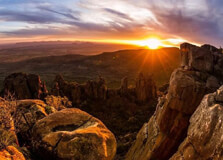
Camdeboo National Park is a picturesque park located in the Eastern Cape province of South Africa. The park is known for its unique landscape and rich biodiversity, making it a popular destination for nature lovers and outdoor enthusiasts. Location and Geographical Overview The Camdeboo National Park is situated in the Great Karoo region, near the town of Graaff-Reinet. It covers an area of approximately 19,000 hectares and is home to a diverse range of habitats, including mountains, valleys, and grasslands. Open and Closing Time The park is open to visitors from 6:00 am to 6:00 pm daily. Entry Fee The entry fee for the Camdeboo National Park is R50 for adults and R30 for children under the age of 12. Senior citizens (over the age of 60) can enter the park for R35. Species-Flora/Fauna Availability The park is home to a wide variety of plant and animal species, including the famous Camdeboo dwarf chameleon, Cape mountain zebra, and black wildebeest. Visitors can also see unique vegetation such as spekboom and Karoo succulents. Activities Performed Visitors to the park can enjoy a range of activities, including game drives, bird watching, hiking, and picnicking. The park also offers guided jeep safaris for those who want to explore the area with an experienced guide. Jeep Safari Charges The cost of a guided jeep safari in the Camdeboo National Park is R500 per person. Age Criterion and Entry Fee The entry fee for adults is R50, for children under 12 years old is R30, and for senior citizens over 60 is R35. Senior Citizen Facilities Senior citizens visiting the park can enjoy discounted entry fees and access to facilities such as restrooms and picnic areas. Best Time to Visit The best time to visit the Camdeboo National Park is during the cooler months of the year, from April to September. The weather is more pleasant, and the wildlife is more active during this time. Nearby Places to Visit Some of the nearby attractions to the Camdeboo National Park include the Valley of Desolation, Nqweba Dam, and the town of Graaff-Reinet with its historic buildings and museums. Vehicle Parking Facility The park offers ample parking space for visitors, with designated parking areas near the entrance and main attractions. Rules and Regulations Visitors to the park are required to adhere to certain rules and regulations to ensure the safety of themselves and the wildlife. These include staying on designated paths, not feeding the animals, and avoiding littering. How to Reach and Other Related Information The Camdeboo National Park can be reached by car from major cities such as Port Elizabeth and Bloemfontein. It is approximately a five-hour drive from Port Elizabeth and a three-hour drive from Bloemfontein. The park also has accommodation options for those who wish to stay overnight and explore the area further. Overall, Camdeboo National Park offers a unique and memorable experience for nature lovers and provides a glimpse into the diverse landscape and wildlife of the Eastern Cape region of South Africa.
Explore More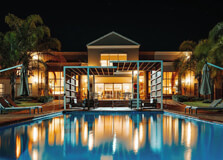
Chelmsford Nature Reserve, KwaZulu Natal
Chelmsford Nature Reserve is a pristine natural wonderland located in the picturesque province of KwaZulu Natal, South Africa. The reserve covers an area of 35,000 hectares and is home to a diverse range of flora and fauna, making it a popular destination for nature lovers and wildlife enthusiasts. Location and Geographical Overview The Chelmsford Nature Reserve is situated in the heart of the Battlefields region, near the town of Newcastle. The reserve is characterized by its rolling hills, lush grasslands, and stunning views of the Drakensberg mountains. It is part of the uKhahlamba-Drakensberg Park, a UNESCO World Heritage Site renowned for its natural beauty and cultural significance. Open and Closing Time The Chelmsford Nature Reserve is open to visitors from 8:00 am to 5:00 pm, seven days a week. It is important to note that entry to the reserve is prohibited outside of these hours. Entry Fee There is a nominal entry fee required to access the Chelmsford Nature Reserve. The fee is R50 for adults and R25 for children under the age of 12. Senior citizens above the age of 60 can enjoy a discounted rate of R30. Species-Flora/Fauna Availability The Chelmsford Nature Reserve is home to a wide variety of plant and animal species, including indigenous grasses, trees, birds, and mammals. Visitors can expect to see species such as zebra, wildebeest, impala, and numerous bird species while exploring the reserve. Activities Performed There are several activities that visitors can enjoy at the Chelmsford Nature Reserve, including hiking, bird watching, picnicking, and game viewing. The reserve also offers guided jeep safaris for those looking to get up close and personal with the wildlife. Jeep Safari Charges The cost of a jeep safari at the Chelmsford Nature Reserve is R250 per person. The safari includes a guided tour of the reserve in an open-air vehicle, allowing visitors to observe the wildlife in their natural habitat. Age Criterion and Entry Fee For male and female visitors, the entry fee is R50 for adults and R25 for children under 12. Senior citizens above the age of 60 can enter the reserve for R30. Children under the age of 4 are allowed free entry. Senior Citizen Facilities The Chelmsford Nature Reserve offers special facilities for senior citizens, including designated parking areas, rest areas, and accessible trails. The reserve staff are also trained to assist elderly visitors and ensure their comfort and safety during their visit. Best Time to Visit The best time to visit the Chelmsford Nature Reserve is during the cooler months of the year, from April to September. During this time, the weather is mild, and the wildlife is more active, making for optimal game viewing opportunities. Nearby Places to Visit There are several other attractions near the Chelmsford Nature Reserve that visitors can explore, including the historic town of Newcastle, the Amajuba Memorial, and the Majuba Mountain. These sites offer a glimpse into the rich cultural heritage and history of the region. Vehicle Parking Facility The Chelmsford Nature Reserve provides ample parking space for visitors, including designated parking areas for cars, buses, and RVs. There is no additional cost for parking, and security personnel are stationed on-site to ensure the safety of vehicles. Rules and Regulations Visitors to the Chelmsford Nature Reserve are required to adhere to certain rules and regulations to ensure the safety of themselves and the wildlife. Some of the key guidelines include refraining from feeding the animals, staying on designated trails, and refraining from littering. How to Reach and Other Related Information The Chelmsford Nature Reserve is easily accessible by car from major cities such as Durban and Johannesburg. Visitors can take the N3 highway to Newcastle, where they can follow signs to the reserve. It is recommended to bring plenty of water, sunscreen, and comfortable walking shoes when visiting the reserve. Overall, the Chelmsford Nature Reserve offers a unique opportunity to experience the natural beauty and wildlife of KwaZulu Natal in a tranquil and unspoiled setting. Whether you are a nature enthusiast, avid hiker, or wildlife lover, a visit to this pristine reserve is sure to be a memorable experience.
Explore More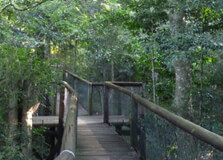
The Dlinza Forest Nature Reserve is a stunning natural treasure located in Eshowe, Kwazulu Natal, South Africa. This lush forest reserve spans over 250 hectares and is home to a diverse range of flora and fauna species, making it a popular destination for nature lovers and outdoor enthusiasts. Location and Geographical Overview The Dlinza Forest Nature Reserve is situated in the town of Eshowe, which is known as the oldest town in Zululand. The reserve is easily accessible and is approximately a 2-hour drive from Durban, making it a convenient day trip or weekend getaway destination. Open and Closing Time The Dlinza Forest Nature Reserve is open to visitors from 8:00 am to 4:30 pm every day of the week, including weekends and public holidays. Visitors are advised to arrive early to make the most of their time exploring the reserve. Entry Fee There is a nominal entry fee to access the Dlinza Forest Nature Reserve, with discounts available for children, students, and senior citizens. The entry fee helps to support the conservation efforts and maintenance of the reserve. Species-Flora/Fauna Availability The Dlinza Forest Nature Reserve is home to a wide variety of plant and animal species, including indigenous trees, birds, butterflies, and small mammals. Visitors can expect to spot unique flora and fauna as they explore the walking trails within the reserve. Activities Performed Visitors to the Dlinza Forest Nature Reserve can enjoy a range of activities, including hiking, birdwatching, picnicking, and nature photography. The reserve offers a serene and peaceful environment for visitors to connect with nature and unwind from the hustle and bustle of city life. Jeep Safari Charges The Dlinza Forest Nature Reserve does not offer jeep safari tours, as the reserve is best explored on foot. Visitors are encouraged to take their time walking through the forest trails to fully immerse themselves in the natural beauty of the surroundings. Age Criterion and Entry Fee Children under the age of 6 are admitted free of charge to the Dlinza Forest Nature Reserve. There are discounted entry fees for students, with identification required. Senior citizens aged 60 and above also receive a discount on the entry fee. Senior Citizen Facilities The Dlinza Forest Nature Reserve is equipped with facilities to cater to the needs of senior citizens, including accessible walking trails, seating areas, and restroom facilities. The reserve staff are friendly and happy to assist senior visitors during their visit. Best Time to Visit The best time to visit the Dlinza Forest Nature Reserve is during the cooler months of the year, from April to September, when the weather is mild and perfect for outdoor activities. Early mornings and late afternoons are ideal times to spot wildlife and birds in the reserve. Nearby Places to Visit While in Eshowe, visitors can explore other nearby attractions such as the Zululand Historical Museum, Fort Nongqayi, and the beautiful Dlinza Forest Aerial Boardwalk. These attractions offer a glimpse into the rich history and culture of the region. Vehicle Parking Facility The Dlinza Forest Nature Reserve provides ample parking facilities for visitors, with designated parking areas located near the entrance of the reserve. Visitors are reminded to lock their vehicles and not leave any valuables in sight to prevent theft. Rules and Regulations Visitors to the Dlinza Forest Nature Reserve are reminded to respect the natural environment and wildlife during their visit. Littering, feeding wildlife, and making loud noises are strictly prohibited. Pets are not allowed in the reserve to protect the flora and fauna. How to Reach and Other Related Information The Dlinza Forest Nature Reserve is easily accessible by car from Durban, with well-maintained roads leading to Eshowe. Visitors can also opt for public transportation or organized tours to reach the reserve. For more information on visiting the reserve, including guided tours and educational programs, visitors can contact the reserve office directly.
Explore More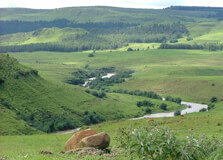
Weenen Nature Reserve, located in the foothills of the central KwaZulu-Natal midlands, is one of South Africa’s lesser-known but ecologically rich protected areas. It spans over 6,500 hectares and is known for its varied topography, thornveld vegetation, rich birdlife, and populations of both plains game and predators. Managed by Ezemvelo KZN Wildlife, the reserve offers an ideal experience for those seeking tranquility, wildlife sightings, and hiking opportunities in a relatively uncrowded setting. Its name, "Weenen", means "weeping" in Dutch, which refers to the region's tragic colonial history. How to Reach Weenen Nature Reserve, KwaZulu-Natal Weenen Nature Reserve is located near the town of Weenen, around 35 km from Estcourt and approximately 60 km from Ladysmith. Here’s how you can reach the reserve: By Road: From Durban (about 200 km), take the N3 highway towards Pietermaritzburg, continue to Estcourt, and follow signs to Weenen. From Johannesburg, it is roughly a 4.5-hour drive south along the N3 to Estcourt. By Public Transport: Limited public transport is available to Weenen town, but not directly to the reserve. Hiring a car or arranging a private transfer from Estcourt or Ladysmith is the most convenient option. The reserve’s entrance is well signposted and accessible via a gravel road, which is suitable for most vehicles, though a high-clearance vehicle is preferable during the rainy season. Weather at Weenen Nature Reserve, KwaZulu-Natal Weenen Nature Reserve enjoys a subtropical climate with warm summers and mild winters. The summer months (October to March) are hot with temperatures ranging from 25°C to 35°C and occasional thunderstorms that bring life to the vegetation. Winters (May to August) are cooler, with temperatures ranging between 5°C at night and 20°C during the day. Rain is less frequent during the winter, making this season excellent for game viewing due to sparse vegetation and animals gathering at water sources. Timing to Visit The reserve is open to visitors daily, including weekends and public holidays, usually from 6:00 AM to 6:00 PM. The best time to visit is in the dry season from May to September when game viewing conditions are optimal, and the weather is comfortable for outdoor activities. Bird watchers, however, may prefer the summer months, as this is when migratory species are present. Why Famous for Weenen Nature Reserve, KwaZulu-Natal? Weenen Nature Reserve is famous for its biodiversity and peaceful, off-the-beaten-path experience. Unlike larger national parks, it offers intimate encounters with wildlife without the crowds. The reserve is a haven for birdwatchers, hosting over 250 recorded bird species, including the rare secretary bird, martial eagle, and various hornbills. It also boasts a healthy population of plains game such as giraffe, zebra, kudu, impala, and waterbuck, along with predators like jackals and caracals. Weenen is also known for its community-driven conservation efforts and educational programs, promoting sustainable wildlife tourism and preservation of natural habitats. Entry and Visit Details about Weenen Nature Reserve, KwaZulu-Natal Visitors must pay a conservation fee upon entry, which contributes to the upkeep of the reserve: Adults: Approximately R50 Children: Around R30 Vehicle entry: Nominal fee (R10–R20) Facilities include a reception office, picnic areas, self-guided hiking trails, and basic accommodation such as self-catering chalets and campsites. Game drives can be done in your own vehicle, and some areas are accessible by guided tours upon prior arrangement. History and Architecture The region where Weenen Nature Reserve now exists has a complex colonial history. The town of Weenen was established in 1838 following a tragic conflict between the Voortrekkers (Dutch settlers) and the local Zulu population. The name “Weenen,” meaning “place of weeping,” is a somber reminder of the massacre that occurred there. The reserve itself was proclaimed to protect this area’s diverse ecosystem and unique terrain, which includes bushveld, acacia thornveld, and open grasslands. While there is no prominent architecture within the reserve, traditional Zulu-style rondavels are often seen in nearby communities, offering a glimpse into local culture and heritage. The infrastructure inside the park remains rustic and in harmony with the natural environment. Things to Do at Weenen Nature Reserve, KwaZulu-Natal Game Viewing: Enjoy self-drive safaris or guided tours to spot antelope, giraffes, and more in their natural habitat. Bird Watching: One of the best birding destinations in KwaZulu-Natal with over 250 species recorded. Hiking: Several walking trails allow visitors to explore the reserve on foot, ranging from short loops to full-day hikes. Picnicking: Designated picnic spots within the park offer scenic views and peaceful surroundings. Photography: A great location for nature, wildlife, and landscape photography. Educational Tours: Learn about conservation and ecology through community projects and school programs conducted in the reserve. Facts about Weenen Nature Reserve, KwaZulu-Natal The reserve covers approximately 6,500 hectares of protected land. It hosts over 250 bird species, making it a top birding site in South Africa. It’s home to both rare and common game species such as giraffe, kudu, and jackals. The park offers basic but comfortable accommodation for overnight visitors. It is one of KwaZulu-Natal’s best locations for eco-tourism and conservation education. Tips about Weenen Nature Reserve, KwaZulu-Natal Bring binoculars and a field guide if you are interested in birding or wildlife spotting. Wear neutral-colored clothing and comfortable walking shoes for hikes and game viewing. Bring your own food and water, as there are limited shops or restaurants inside the reserve. Book accommodation in advance, especially during school holidays and weekends. Respect the park rules—do not feed animals or leave your vehicle outside of designated areas. Check weather and road conditions before traveling, especially during the rainy season. Use insect repellent to guard against mosquitoes, particularly in summer.
Explore More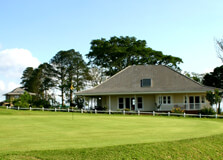
Eshowe Country Club is a hidden gem in the lush landscapes of KwaZulu-Natal, South Africa. Located in the historic town of Eshowe, the club is one of the oldest and most scenic golf courses in the region. Surrounded by the Dlinza Forest, this country club offers a peaceful escape into nature along with top-class sporting and leisure facilities. Whether you’re an avid golfer, a tennis player, or a traveler seeking relaxation, Eshowe Country Club provides a unique blend of history, natural beauty, and recreation. How to Reach Eshowe Country Club, KwaZulu-Natal Eshowe Country Club is located in Eshowe, a town in the Zululand district of KwaZulu-Natal. It is around 140 kilometers north of Durban, making it easily accessible by car. The drive from Durban takes approximately 1.5 to 2 hours via the N2 and R66 roads. If you're coming from Richards Bay, the drive is about 90 km and takes roughly 1 hour. Public transport options are limited, so traveling by private vehicle is recommended. Clear signboards are placed throughout Eshowe, guiding visitors to the country club. GPS services and map applications also provide accurate directions to the club entrance. Weather at Eshowe Country Club, KwaZulu-Natal Eshowe enjoys a subtropical climate, making the country club accessible and enjoyable throughout the year. Summers (November to March) are warm and humid, with average temperatures ranging from 22°C to 30°C. Rainfall is more frequent during this season, mostly in the form of afternoon showers. Winter (May to August) is mild and dry, with average temperatures between 10°C and 24°C, providing perfect weather for golfing and walking in the nearby forests. Spring and autumn bring pleasant, sunny days with cooler evenings, ideal for outdoor activities. Timings for Visit Eshowe Country Club is open throughout the week. Typical operating hours are: Golf course: 7:00 AM – 6:00 PM Clubhouse and bar: 10:00 AM – 9:00 PM Restaurant: Open for lunch and dinner (timings may vary based on bookings and events) Visitors are advised to call ahead for tee time bookings, restaurant availability, or events. Why Famous for Eshowe Country Club, KwaZulu-Natal? Eshowe Country Club is famous for its picturesque 18-hole golf course that weaves through natural forested areas, providing golfers with both a challenge and a visual treat. What makes it truly unique is that it is one of the only golf courses in the country where golfers share the green with wildlife like monkeys and various bird species. Besides golf, the club is renowned for its welcoming atmosphere, social events, and its location near the famous Dlinza Forest and aerial boardwalk. It is also a gathering place for local sports and community events, making it a hub of activity in the town. Entry and Visit Details about Eshowe Country Club, KwaZulu-Natal Visitors are welcome at Eshowe Country Club, and entry to the clubhouse and grounds is usually free. However, fees apply for the use of the golf course and other sports facilities: Green fees for golf range between R150 – R300 depending on the day and time. Golf cart and equipment rental are available at additional costs. Tennis court and bowls usage may have nominal fees for non-members. The club also offers short-term membership options for tourists and visitors who plan extended stays in Eshowe. Booking in advance is recommended, especially during weekends or holidays. History and Architecture Eshowe Country Club has a long and proud history that dates back to the early 20th century. Established in 1907, the club is one of the oldest in KwaZulu-Natal. The architecture of the main clubhouse retains a colonial charm with modern upgrades. Its design blends old-world elegance with a rustic, forest-inspired atmosphere. Over the decades, the club has evolved to meet the changing needs of the community while preserving its historical identity. The course layout and fairways reflect thoughtful landscaping that integrates with the surrounding natural forest, creating a peaceful ambiance that feels far removed from city life. Things to Do at Eshowe Country Club, KwaZulu-Natal The country club offers a wide variety of activities suitable for individuals, families, and groups: Golfing: The main attraction is the scenic 18-hole course, with tree-lined fairways and birdlife. Tennis: Play a friendly match or join local tournaments on the well-maintained tennis courts. Bowls: Lawn bowls is a popular social sport at the club. Dining: Enjoy meals or snacks at the club’s restaurant, which serves local and continental dishes. Relaxing at the Bar: The bar is a cozy place to unwind, meet locals, or watch a rugby game. Explore Dlinza Forest: Located nearby, it offers walking trails and a canopy boardwalk with stunning views. Attend Events: The club hosts regular social evenings, themed dinners, live music, and charity events. Facts about Eshowe Country Club, KwaZulu-Natal The club was founded in 1907, making it over a century old. The golf course is one of the few in the world bordering an indigenous forest. Eshowe is known as the oldest European settlement in Zululand. The name “Eshowe” comes from the Zulu word for the sound of wind blowing through trees. The club is involved in various community initiatives and supports local sports development. Tips about Eshowe Country Club, KwaZulu-Natal Call ahead to book tee times, especially on weekends. Wear comfortable sportswear and bring sunscreen if you plan to golf or play outdoors. Bring binoculars for birdwatching in the nearby Dlinza Forest. Check the club’s notice board or website for upcoming events and tournaments. Visit the club during spring or autumn for the best weather and scenery. If you’re not a golfer, enjoy a quiet meal on the veranda with a view of the course and forest beyond.
Explore More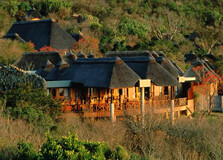
Ithala Game Reserve is a stunning wildlife sanctuary located in the province of KwaZulu-Natal, South Africa. It is known for its diverse landscapes, ranging from deep valleys to rugged mountain peaks, as well as its rich biodiversity. The reserve covers an area of over 30,000 hectares and is home to a wide variety of plant and animal species, making it a popular destination for nature enthusiasts and wildlife lovers. Location and Geographical Overview The Ithala Game Reserve is situated in the northern region of KwaZulu-Natal, approximately 400 kilometers from Durban. The reserve is nestled in the rugged, mountainous terrain of the Ngotshe Mountains, offering visitors breathtaking views of the surrounding landscape. Open and Closing Time The Ithala Game Reserve is open daily from 6:00 am to 6:00 pm, allowing visitors ample time to explore the reserve and enjoy its natural beauty. However, it is recommended to check the official website or contact the reserve directly for any changes in operating hours. Entry Fee The entry fee for the Ithala Game Reserve varies depending on the age and residency status of the visitor. South African residents typically pay a lower fee compared to international tourists. It is advisable to check the official website or contact the reserve for the most up-to-date pricing information. Species-Flora/Fauna Availability The Ithala Game Reserve is home to a wide range of plant and animal species, including elephants, rhinos, giraffes, zebras, and various bird species. The diverse flora and fauna of the reserve provide a unique opportunity for visitors to observe and appreciate the beauty of nature up close. Activities Performed Visitors to the Ithala Game Reserve can enjoy a variety of activities, including guided game drives, hiking trails, birdwatching, and picnicking. The reserve also offers cultural experiences, such as visits to ancient rock art sites and traditional homesteads, providing a holistic wildlife experience. Jeep Safari Charges Jeep safari charges at the Ithala Game Reserve vary depending on the duration and type of safari experience chosen. Visitors can opt for guided game drives led by experienced rangers, providing an opportunity to spot wildlife and learn about the reserve's conservation efforts. Age Criterion for Male, Female, Children and their Entry Fee The Ithala Game Reserve may have specific age criteria for entry, with different pricing structures for males, females, and children. It is recommended to inquire about any age restrictions and entry fees for different demographics before planning a visit to the reserve. Senior Citizen Facilities The Ithala Game Reserve may offer special facilities and discounts for senior citizens, making it easier for older visitors to explore the reserve comfortably. Senior citizens can enjoy guided tours, accessible amenities, and discounted entry fees, enhancing their wildlife experience. Best Time to Visit The best time to visit the Ithala Game Reserve is during the dry season, which typically falls between May and September. The cooler temperatures and lack of rainfall make it easier to spot wildlife, making for an optimal safari experience. However, the reserve remains open year-round, with each season offering its unique charms. Nearby Places to Visit For those looking to explore beyond the Ithala Game Reserve, there are several nearby attractions worth visiting. These include the Pongola Game Reserve, Hluhluwe-Imfolozi Park, and the captivating Zulu cultural villages, offering a diverse range of experiences for travelers. Vehicle Parking Facility The Ithala Game Reserve provides ample parking facilities for visitors arriving by car, ensuring a hassle-free experience. Visitors can safely park their vehicles and proceed to explore the reserve, knowing that their transportation is secure and easily accessible. Rules and Regulations Visitors to the Ithala Game Reserve are expected to follow certain rules and regulations to ensure the safety of wildlife and maintain the reserve's pristine environment. These regulations may include guidelines on behavior, interaction with animals, waste disposal, and respecting the natural habitat. How to Reach and Other Related Information The Ithala Game Reserve is accessible by road, with well-maintained routes leading to the entrance of the reserve. Visitors can opt to drive from major cities like Durban or Johannesburg or arrange for organized tours with transportation included. Additionally, it is advisable to book accommodation in advance and check for any special events or activities happening during your visit. Overall, the Ithala Game Reserve offers a captivating wildlife experience amidst the stunning landscapes of KwaZulu-Natal, making it a must-visit destination for nature enthusiasts and adventure seekers alike.
Explore More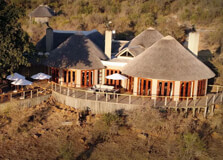
Nambiti Game Reserve is located in the heart of Kwazulu Natal, South Africa, and is a premier safari destination known for its breathtaking landscapes and abundant wildlife. The reserve spans over 22,000 acres of diverse terrain, including open plains, dense bushveld, and winding rivers. Location and Geographical Overview The reserve is situated in the Nambiti Private Game Reserve, which is nestled in the picturesque hills of the Drakensberg Mountains. It is easily accessible from major cities like Durban and Johannesburg, making it a popular choice for both local and international visitors. Open and Closing Time The Nambiti Game Reserve is open daily from 6:00 am to 6:00 pm, allowing visitors ample time to explore the diverse landscapes and spot the incredible wildlife that call the reserve home. Entry Fee There is an entry fee to access the Nambiti Game Reserve, which varies depending on the type of experience you choose. Visitors can opt for day trips, overnight stays, or luxury safari packages. Species-Flora/Fauna Availability The Nambiti Game Reserve is home to a wide variety of wildlife, including the Big Five (lion, leopard, elephant, rhinoceros, and buffalo), as well as numerous other species such as giraffe, zebra, wildebeest, and various antelope. The reserve is also a haven for bird watchers, with over 250 bird species recorded in the area. Activities Performed Visitors to the Nambiti Game Reserve can enjoy a range of activities, including game drives, guided bush walks, bird watching, and stargazing. The reserve also offers cultural experiences, where guests can learn about the local Zulu heritage and traditions. Jeep Safari Charges Jeep safari charges at the Nambiti Game Reserve vary depending on the type of experience you choose, with options for day drives, morning and evening safaris, and private tours available. It is recommended to book in advance to secure your spot. Age Criterion and Entry Fee Children under the age of 6 are not permitted on game drives for safety reasons. The entry fee for adults and children over the age of 6 varies depending on the type of experience selected. Senior citizens may be eligible for discounted rates, so it is advisable to inquire about special offers when booking. Senior Citizen Facilities The Nambiti Game Reserve is committed to providing a comfortable and enjoyable experience for all visitors, including senior citizens. The lodge facilities are designed to be accessible, with options for special dietary needs and assistance available upon request. Best Time to Visit The best time to visit the Nambiti Game Reserve is during the dry winter months from May to September, when the vegetation is sparse, making it easier to spot wildlife. However, the reserve is open year-round, and each season offers a unique experience. Nearby Places to Visit Located in the heart of Kwazulu Natal, the Nambiti Game Reserve is surrounded by other popular tourist attractions, including the Drakensberg Mountains, the Battlefields Route, and the picturesque town of Ladysmith. Visitors can explore the rich history and diverse landscapes of the region. Vehicle Parking Facility The Nambiti Game Reserve offers secure parking facilities for visitors who choose to self-drive to the reserve. There is ample parking available, and security measures are in place to ensure the safety of vehicles. Rules and Regulations Visitors to the Nambiti Game Reserve are required to adhere to certain rules and regulations to ensure the safety of both guests and wildlife. These include staying in designated areas, following the guidance of experienced guides, and respecting the natural environment. How to Reach and Other Related Information The Nambiti Game Reserve is easily accessible by road from major cities like Durban and Johannesburg, with well-maintained highways leading to the reserve. Visitors can also arrange transfers or flights to nearby airports for added convenience. It is advisable to book accommodation and activities in advance to secure your preferred dates and experiences.
Explore More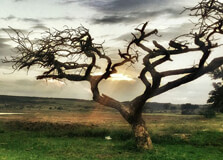
Spioenkop Dam Nature Reserve is a beautiful and historically rich destination located in the heart of KwaZulu-Natal, South Africa. Nestled between the towns of Ladysmith and Bergville, this tranquil reserve surrounds the vast Spioenkop Dam and offers breathtaking views of the nearby Drakensberg Mountains. Known for its diverse wildlife, outdoor recreational activities, and historical significance, Spioenkop Dam Nature Reserve attracts nature lovers, bird watchers, history buffs, and families looking for a peaceful escape. How to Reach Spioenkop Dam Nature Reserve, KwaZulu-Natal Spioenkop Dam Nature Reserve is located approximately 35 km from Ladysmith and about 15 km from Bergville, making it accessible by car from various major cities in the region. From Durban, the reserve is about a 3-hour drive (roughly 250 km) via the N3 highway. From Johannesburg, it takes around 4 hours (approximately 360 km), also via the N3 and R616 roads. The reserve can be accessed by turning off at Bergville or Winterton and following signage along rural roads. Private transportation is the best option, as there are limited public transport services to the area. GPS navigation or asking locals for directions once you're nearby is recommended. Weather at Spioenkop Dam Nature Reserve, KwaZulu-Natal The weather at Spioenkop Dam Nature Reserve is typically moderate and pleasant, ideal for outdoor activities. Summer (October to March) is warm, with temperatures ranging from 20°C to 35°C. Occasional afternoon thunderstorms are common during this season, contributing to the lush greenery. Winter (May to August) is cooler and drier, with daytime temperatures ranging between 10°C and 25°C. The crisp air and clear skies during winter make it a great time for game viewing and hiking. Spring and autumn offer mild, comfortable weather and fewer crowds, making them ideal for visiting. Timings for Visit Spioenkop Dam Nature Reserve is generally open daily from sunrise to sunset. The main gate usually operates from 6:00 AM to 6:00 PM. Visitors who plan to stay overnight in chalets or camping sites should check-in within these hours. It's advisable to confirm opening times during public holidays or off-peak seasons, as they may vary slightly. Why Famous for Spioenkop Dam Nature Reserve, KwaZulu-Natal? Spioenkop Dam Nature Reserve is famous for its scenic beauty, rich biodiversity, and historical importance. The reserve is located near the site of the Battle of Spioenkop, one of the most dramatic conflicts during the Second Anglo-Boer War in 1900. The hilltop battlefield overlooks the dam and is preserved as a heritage site. In addition to its history, the reserve is a popular destination for water sports, fishing, birdwatching, and wildlife viewing. The serene Spioenkop Dam is perfect for canoeing, sailing, and boating, while the surrounding grasslands and woodlands host a wide range of animals including white rhino, giraffe, zebra, and several antelope species. Entry and Visit Details about Spioenkop Dam Nature Reserve, KwaZulu-Natal Entry to Spioenkop Dam Nature Reserve is affordable, with a conservation fee charged per person and per vehicle. As of recent updates, adults can expect to pay around R40–R60, while children under 12 pay less. Fees may vary slightly for international visitors or during peak seasons. Accommodation options include rustic chalets, self-catering cottages, and camping sites. Booking in advance is recommended, especially during school holidays and long weekends. Braai (barbecue) facilities, picnic spots, and ablution blocks are available throughout the park, offering comfort for day and overnight visitors. History and Architecture Spioenkop Dam was constructed in the 1960s to supply water to the surrounding areas. The architecture of the dam includes an impressive embankment and spillway that still function efficiently. The dam's design blends with the natural landscape, enhancing the area’s scenic charm. Nearby, Spioenkop Hill is a site of great historical importance. The Battle of Spioenkop took place here in January 1900 during the Anglo-Boer War. British and Boer forces fought for control of the hill, resulting in a tragic loss of life. The hilltop memorial includes graves, trenches, and information plaques, providing a solemn but fascinating insight into South Africa’s colonial history. Things to Do at Spioenkop Dam Nature Reserve, KwaZulu-Natal Visitors to the reserve can enjoy a variety of outdoor and educational activities: Game Viewing: Explore the park and spot animals like white rhino, giraffe, wildebeest, and kudu. Bird Watching: The reserve is home to over 250 species of birds, making it ideal for birding enthusiasts. Water Sports: Enjoy boating, sailing, canoeing, and windsurfing on the expansive Spioenkop Dam. Fishing: The dam is stocked with fish such as bass and carp—great for recreational anglers. Hiking and Nature Trails: Take guided or self-guided walks through the bushveld, enjoying scenic views and wildlife. Historical Battlefield Tour: Visit Spioenkop Hill to learn about the famous battle and view the memorials and war graves. Picnicking and Braai: Use the many picnic areas and braai stands scattered throughout the reserve. Facts about Spioenkop Dam Nature Reserve, KwaZulu-Natal The reserve covers approximately 60 square kilometers, with the dam at its center. Spioenkop means "hill of spies" in Afrikaans, a reference to its vantage point. The Battle of Spioenkop influenced military tactics and is studied in war academies worldwide. Winston Churchill and Mahatma Gandhi were both present during the Anglo-Boer War and near the Spioenkop area. The dam supplies water to Ladysmith and parts of the uThukela District Municipality. Tips about Spioenkop Dam Nature Reserve, KwaZulu-Natal Bring binoculars for better views of birds and distant wildlife. Pack sunscreen, hats, and insect repellent, especially in summer. Always carry drinking water and snacks if exploring remote parts of the reserve. Respect wildlife—keep a safe distance and don’t feed animals. Check road conditions if visiting during rainy seasons, as some roads may become muddy. Visit the battlefield early in the morning or late afternoon for the best lighting and fewer crowds. Book accommodations early during school holidays or public holiday weekends.
Explore More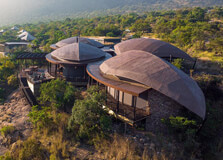
Vryheid Hill Nature Reserve is a scenic and historically rich natural area located on the outskirts of the town of Vryheid in northern KwaZulu-Natal, South Africa. Spread over approximately 1,000 hectares, the reserve offers an exciting mix of natural beauty, historical significance, and diverse wildlife. With walking trails, birdwatching spots, and cultural heritage sites, it’s a great destination for day trips and educational visits. How to Reach Vryheid Hill Nature Reserve, KwaZulu-Natal Vryheid Hill Nature Reserve is easily accessible by road, situated just a few minutes from the town center of Vryheid. Here are the main ways to reach the reserve: By Car from Durban: Drive northwest on the N3, then take the R33 towards Greytown and continue on the R34 to Vryheid. The journey takes approximately 4.5 to 5 hours. By Car from Johannesburg: Take the N3 towards Harrismith, then switch to the R34 towards Vryheid. This route also takes around 5 hours. Public Transport: Minibus taxis and intercity buses operate to Vryheid from major cities, but a private car or taxi is needed to reach the reserve from the town center. Weather at Vryheid Hill Nature Reserve The reserve experiences a mild to warm climate with distinct seasonal changes: Summer (November to March): Warm and wet, with temperatures ranging from 18°C to 30°C. Rain is more frequent, especially in the afternoons. Winter (May to August): Cool and dry, with daytime temperatures between 10°C and 22°C. Nights can be quite cold, sometimes dropping to 5°C. Spring and autumn are pleasant with moderate temperatures, making them ideal for hiking and wildlife viewing. Timing to Visit Vryheid Hill Nature Reserve is open to visitors year-round. The best time to visit is during the dry months from May to September when the trails are more accessible, and visibility for wildlife viewing is better. Opening Hours: Daily from 6:00 AM to 6:00 PM Best Visiting Time: Early morning or late afternoon for cooler weather and increased animal activity Why Famous for Vryheid Hill Nature Reserve, KwaZulu-Natal? Vryheid Hill Nature Reserve is known for its combination of natural habitats and historical landmarks. Its elevated location offers panoramic views of the surrounding countryside, and its hills are dotted with memorials and sites from the Anglo-Boer War. Historical Value: Home to battle sites and memorials from the Anglo-Boer War era Biodiversity: A refuge for various birds, antelope species, and indigenous flora Educational Importance: Frequently visited by schools and researchers for environmental education Entry and Visit Details Entry to the reserve is usually free or very affordable, though donations are welcomed for maintenance. Guided tours can be arranged with local guides or tourism offices. Entry Fee: Free for self-guided visits (donations optional); guided tours may have a small fee Facilities: Walking trails, benches, information boards, and a few picnic areas Safety: Day visits only are advised. Travel in groups for hiking and bring adequate water and sunscreen. History and Architecture Vryheid Hill Nature Reserve is historically significant due to its role in the Anglo-Boer War. The hill was used as a strategic lookout point and contains multiple war memorials and remnants of military trenches. Memorial plaques and monuments have been erected over the years to honor the soldiers who fought and died in the region. Architecturally, the structures within the reserve include old stone lookout posts and commemorative monuments. While not grand or ornate, they serve as humble and poignant reminders of South Africa’s military past. Things to Do at Vryheid Hill Nature Reserve Hiking: Several walking trails allow visitors to explore the hill’s landscape and enjoy panoramic views of Vryheid town. Bird Watching: The reserve is a haven for birdlife, including raptors, weavers, and sunbirds. Photography: Capture scenic views, flora, and wildlife, as well as historical memorials. Historical Exploration: Visit the Anglo-Boer War memorials and read interpretive signs to learn about the site’s past. Picnicking: There are open grassy areas ideal for relaxing with a packed lunch. Facts about Vryheid Hill Nature Reserve The reserve spans nearly 1,000 hectares, covering hills, grasslands, and patches of indigenous forest. It is home to small game like duikers and mongoose, along with numerous bird species. The area played a critical role during the Anglo-Boer War as a defensive outpost. The word "Vryheid" means “freedom” in Afrikaans, symbolizing the historical struggle of the region. Despite its modest size, the reserve serves both conservation and educational purposes. Tips about Vryheid Hill Nature Reserve, KwaZulu-Natal Wear comfortable walking shoes suitable for rugged terrain. Carry water, a hat, and sunscreen, especially during warmer months. Use insect repellent, especially if visiting during or after the rainy season. Visit early in the morning for the best wildlife and birdwatching opportunities. Travel with a guide if you're interested in the historical context of the area. Always inform someone of your planned route and expected return time when hiking. Do not litter and help preserve the natural and historical heritage of the site.
Explore More
Wagendrift Nature Reserve is a tranquil and scenic natural sanctuary located near Estcourt in KwaZulu-Natal, South Africa. Covering approximately 980 hectares, the reserve centers around the Wagendrift Dam, a peaceful water body surrounded by rolling hills and lush grasslands. Known for its serene environment and outdoor recreational activities, it is a perfect destination for families, bird watchers, anglers, and those looking to escape into nature. How to Reach Wagendrift Nature Reserve, KwaZulu-Natal Wagendrift Nature Reserve is conveniently accessible by road: By Car from Durban: Take the N3 highway towards Johannesburg. After about 180 kilometers, take the Estcourt off-ramp (Exit 179), then follow the signs toward Wagendrift Dam. The reserve is located approximately 6 km from Estcourt. By Car from Johannesburg: Head south on the N3 towards Durban. Exit at Estcourt (Exit 179) and follow the signage to the reserve. By Air: The nearest major airport is King Shaka International Airport in Durban. From there, it is best to rent a car for the approximately 2.5 to 3-hour drive. Weather at Wagendrift Nature Reserve Wagendrift Nature Reserve enjoys a pleasant climate for most of the year: Summer (November to March): Warm and moderately humid with temperatures ranging from 20°C to 30°C. This is also the rainy season, so afternoon thunderstorms are common. Winter (May to August): Cool and dry, with temperatures averaging between 5°C and 20°C. Early mornings and nights can be chilly, especially near the water. The best time to visit for outdoor activities is during the dry winter and early spring months (May to September) when the weather is clear and sunny. Timings to Visit Wagendrift Nature Reserve is open daily, including weekends and public holidays: Opening Hours: 6:00 AM – 6:00 PM It is recommended to arrive early to make the most of the day, especially for boating, fishing, or enjoying a picnic under the sun. Why Famous for Wagendrift Nature Reserve, KwaZulu-Natal? Wagendrift is primarily famous for its peaceful setting and water-based recreation. The dam attracts nature lovers, anglers, and picnickers looking for a relaxing day out. Its proximity to Estcourt makes it a convenient getaway for locals and tourists alike. Boating and Fishing: The dam offers ample space for non-motorized boating and angling, making it popular among fishing enthusiasts. Bird Watching: The reserve is a haven for birdlife, with species like kingfishers, herons, and African fish eagles often spotted. Scenic Picnics: Well-maintained picnic spots with shaded trees and braai facilities make it ideal for families. Entry and Visit Details Visitors are required to pay a small conservation fee upon entry: Adults: Approx. R30 per person Children (under 12): Approx. R15 per child Vehicles: A nominal fee is charged per vehicle (approx. R20) Day visitors are welcome, and there are also camping facilities available for those who wish to stay overnight. The reserve provides basic amenities such as restrooms, picnic tables, and barbeque (braai) areas. History and Architecture The name "Wagendrift" refers to a historical ox-wagon crossing point along early settler and trade routes in the 19th century. While the reserve does not feature architectural monuments, it carries historical significance as a part of South Africa’s early inland transport routes. The dam was constructed in the mid-20th century to serve as a water supply source for the surrounding region. Since then, the surrounding land has been protected as a nature reserve to preserve its biodiversity and provide a recreational area. Things to Do at Wagendrift Nature Reserve Fishing: Try your luck catching species like bass, carp, and barbel. A valid fishing license is required. Canoeing and Kayaking: Non-motorized boats are allowed, and paddling on the calm waters is peaceful and enjoyable. Bird Watching: Bring binoculars to spot a variety of bird species, particularly waterbirds. Picnicking: Relax at the picnic spots equipped with tables and braai stands, perfect for a family outing. Hiking: There are short walking trails around the reserve offering great views of the dam and surrounding hills. Camping: Set up a tent or caravan at designated camping sites for an immersive nature experience. Facts about Wagendrift Nature Reserve The reserve spans around 980 hectares in total area. The dam is fed by the Bushman’s River and supplies water to Estcourt and surrounding towns. The area is rich in both aquatic and terrestrial birdlife, making it an excellent birding destination. The name "Wagendrift" translates to “wagon crossing,” referencing its historic significance. The reserve is managed by Ezemvelo KZN Wildlife. Tips about Wagendrift Nature Reserve, KwaZulu-Natal Bring your own food, water, and braai equipment, as there are no restaurants or shops inside the reserve. Always carry sunscreen, hats, and insect repellent, especially in summer. If fishing, ensure you have a valid permit from Ezemvelo or the relevant authorities. Respect nature—do not litter or disturb wildlife. Arrive early for a full day of activities and better chances to see birds and wildlife. Ideal for a stopover if traveling along the N3 between Durban and Johannesburg. Check the weather forecast before visiting to avoid rain, especially if planning to picnic or fish.
Explore More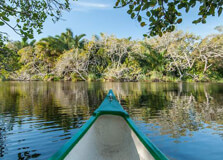
Greater St Lucia Wetlands Park
The Greater St Lucia Wetlands Park, located in the province of KwaZulu-Natal in South Africa, is a UNESCO World Heritage Site known for its diverse ecosystems and wildlife. The park spans over 280 km of coastline along the Indian Ocean and includes a variety of habitats such as beaches, coral reefs, wetlands, and savannas. Location and Geographical Overview The Greater St Lucia Wetlands Park is situated in the northeastern part of KwaZulu-Natal, near the town of St Lucia. It is bordered by Lake St Lucia to the west and the Indian Ocean to the east. The park is easily accessible by road and is approximately a 2-hour drive from the city of Durban. Open and Closing Time The park is open to visitors from 6:00 AM to 6:00 PM daily, allowing ample time to explore the diverse landscapes and wildlife that the park has to offer. Entry Fee There is an entry fee for visitors to the Greater St Lucia Wetlands Park, with different rates for South African residents and international tourists. South African residents can expect to pay a lower fee compared to international visitors. The entry fee includes access to the various sections of the park and guided tours, if desired. Species-Flora/Fauna Availability The park is home to a wide range of plant and animal species, making it a biodiversity hotspot in South Africa. Visitors to the Greater St Lucia Wetlands Park can expect to see a variety of wildlife, including hippos, crocodiles, various bird species, and even the occasional leopard. Activities Performed Visitors to the park can partake in a variety of activities, such as guided nature walks, birdwatching, boat cruises on Lake St Lucia, and snorkeling or diving in the coral reefs offshore. The park also offers jeep safaris for those looking to explore the park's more remote areas and encounter wildlife up close. Jeep Safari Charges For those interested in taking a jeep safari in the Greater St Lucia Wetlands Park, there are additional charges that apply. The safari fees vary depending on the duration of the tour and the number of participants. It is recommended to book in advance to secure a spot on the safari. Age Criterion and Entry Fee There are age criteria for entry to the park, with different entry fees for males, females, and children. Children under a certain age may be eligible for free entry or discounted rates. Senior citizens may also receive special discounts on entry fees. Senior Citizen Facilities The Greater St Lucia Wetlands Park offers facilities and services catering to senior citizens, such as wheelchair accessibility, resting areas, and guided tours suitable for those with mobility issues. The park staff are trained to assist elderly visitors and ensure their comfort and safety during their visit. Best Time to Visit The best time to visit the Greater St Lucia Wetlands Park is during the dry season, which typically falls between the months of May and September. During this time, the weather is cooler, and wildlife viewing opportunities are at their peak. It is important to note that the park may be busier during peak tourist seasons, so planning ahead is recommended. Nearby Places to Visit While visiting the Greater St Lucia Wetlands Park, visitors can explore nearby attractions such as Cape Vidal, a beautiful beach renowned for its snorkeling and swimming opportunities, and the iSimangaliso Wetland Park, a neighboring reserve that offers additional wildlife viewing and outdoor activities. Vehicle Parking Facility The Greater St Lucia Wetlands Park provides ample parking facilities for visitors arriving by car. There are designated parking areas located near the entrance of the park, ensuring convenient access to the various sections of the park and amenities. Rules and Regulations Visitors to the Greater St Lucia Wetlands Park are required to adhere to certain rules and regulations to ensure the safety of both visitors and wildlife. Some common guidelines include staying on designated trails, refraining from feeding the animals, and respecting the natural environment by not littering. How to Reach and Other Related Information The Greater St Lucia Wetlands Park can be reached by car from major cities such as Durban, with well-maintained roads leading to the park entrance. There are also guided tours and transportation services available for those who prefer not to drive. It is advisable to check the park's website or contact the park authorities for the most up-to-date information on visiting the park.
Explore More8D - 7N South Africa Tour Package
8 Days/ 7 Night
Limpopo - Garden Route - Cape Town
10 Day Luxury Tour Itinerary For South Africa And Botswana
10 Days/ 9 Night
Cape Town - Johannesburg - Maun - Okavango Delta
South African Safari Holidays
8 Days/ 7 Night
Limpopo - Johannesburg - Kapama
Cape Town Discovery Itinerary Tour
8 Days/ 7 Night
Cape Town
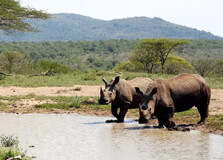
Hluhluwe Umfolozi Game Reserve
Hluhluwe Umfolozi Game Reserve, located in the heart of KwaZulu-Natal, South Africa, is one of the oldest and most renowned game reserves in Africa. Established in 1895, the reserve is world-famous for its conservation efforts, particularly the successful rescue of the white rhinoceros from the brink of extinction. Spanning over 96,000 hectares, the reserve offers rich biodiversity, stunning landscapes, and a wide array of wildlife, including the Big Five: lion, leopard, elephant, buffalo, and rhinoceros. It consists of two formerly separate reserves—Hluhluwe in the north and Umfolozi (now spelled iMfolozi) in the south. How to Reach Hluhluwe Umfolozi Game Reserve, KwaZulu-Natal The reserve is easily accessible by road and is situated about 280 km north of Durban. Here are the most common travel options: By Car: From Durban, take the N2 highway north. The main entrance gates are Memorial Gate (for Hluhluwe) and Nyalazi Gate (for iMfolozi), which are both well-signposted and accessible by most vehicles. The drive takes around 3.5 to 4 hours. By Air: The nearest airport is King Shaka International Airport (Durban). From there, you can rent a car or book a guided tour. By Tour Operator: Several guided safari companies in Durban and St Lucia offer day trips and overnight packages to the reserve. Weather at Hluhluwe Umfolozi Game Reserve The climate is typically subtropical. Summers (November to March) are hot and humid, with daytime temperatures reaching up to 35°C. Rainfall is most common in summer, supporting the lush vegetation. Winters (May to August) are dry and cooler, with pleasant temperatures ranging from 10°C to 25°C. The dry season is ideal for wildlife viewing as animals gather around water sources and visibility improves due to less vegetation. Timings to Visit Hluhluwe Umfolozi Game Reserve is open daily: Opening hours: 5:00 AM – 7:00 PM in summer; 6:00 AM – 6:00 PM in winter The best time to visit is during the dry season from May to September for optimal game viewing. Early morning and late afternoon are the best times of the day for game drives. Why Famous for Hluhluwe Umfolozi Game Reserve, KwaZulu-Natal? Hluhluwe Umfolozi is internationally celebrated for several reasons: It is the oldest proclaimed nature reserve in Africa. It was the focal point of the "Operation Rhino" conservation initiative in the 1950s and 60s, which saved the southern white rhino from extinction. It is one of the few parks in Africa where you can see all of the Big Five in their natural habitat. It features diverse habitats, from dense forests to open savannah and riverine ecosystems. Entry and Visit Details Visitors must pay a conservation fee at the gate: South African Residents: Approximately R70 per adult, R35 per child International Visitors: Approximately R240 per adult, R120 per child The park has several well-maintained rest camps, self-catering chalets, tented camps, and picnic spots. Hluhluwe Hilltop Camp and iMfolozi Mpila Camp are the two main accommodation areas offering guided walks, night drives, and game drives. History and Architecture The reserve’s history dates back to 1895 when the area was declared protected to conserve dwindling populations of white rhinoceroses. Historically, the iMfolozi area was the royal hunting ground of Zulu kings, including Shaka Zulu. Remnants of Zulu culture and battlefields from the Anglo-Zulu War still echo in the surrounding region. The park’s architecture is largely in harmony with its environment. Accommodation and facilities are built with thatched roofs and stone or timber, blending well with the natural surroundings and minimizing environmental impact. Things to Do at Hluhluwe Umfolozi Game Reserve Game Drives: Conducted in your own vehicle or with park rangers, game drives offer sightings of lions, rhinos, elephants, zebras, and more. Guided Walks: Accompanied by armed guides, these walks let you explore the bush on foot and learn about tracking, plants, and birdlife. Bird Watching: With over 340 species recorded, it’s a paradise for bird lovers. Photography: The scenic vistas and wildlife provide excellent opportunities for photography, especially during golden hours. Picnicking: Several shaded picnic areas with restrooms are available for day visitors. Educational Tours: Ideal for schools and eco-tourists interested in conservation and African ecology. Facts about Hluhluwe Umfolozi Game Reserve The reserve is over 120 years old—one of the oldest in the world. It is home to the largest population of white rhinos in the world. There are more than 86 mammal species and over 340 bird species. The park was originally split into two separate areas: Hluhluwe and iMfolozi, which were merged in the 1980s. It contains several archaeological and cultural sites related to Zulu heritage. Tips about Hluhluwe Umfolozi Game Reserve, KwaZulu-Natal Arrive early in the morning or late afternoon for the best animal sightings. Carry binoculars, a camera with zoom lens, and plenty of water and snacks. Follow park rules strictly—do not feed animals or get out of your vehicle in undesignated areas. Fuel up before entering; there are no petrol stations inside the reserve. Wear neutral-colored clothing and sunscreen, and bring insect repellent. Book accommodation in advance, especially during peak seasons like school holidays and public holidays.
Explore More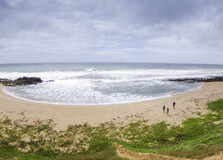
Sodwana Bay National Park, located in the province of KwaZulu-Natal in South Africa, is a popular destination for nature lovers and outdoor enthusiasts. The park is known for its stunning marine biodiversity, crystal-clear waters, and pristine beaches. With its diverse ecosystems, Sodwana Bay National Park offers visitors a chance to explore and appreciate the natural beauty of the region. Location and Geographical Overview Sodwana Bay National Park is situated along the east coast of South Africa, near the border of Mozambique. The park covers an area of approximately 100 km² and is part of the iSimangaliso Wetland Park, a UNESCO World Heritage Site. The park is renowned for its coral reefs, which are some of the southernmost coral reefs in the world, making it a popular destination for scuba diving and snorkeling enthusiasts. Opening and Closing Time The park is open daily from 7:00 am to 5:00 pm. Entry Fee The entry fee for Sodwana Bay National Park varies depending on the age and residency status of the visitor. South African residents can expect to pay a lower fee compared to international visitors. Species-Flora/Fauna Availability Sodwana Bay National Park is home to a wide variety of plant and animal species. The park's coastal forests and dune vegetation provide habitat for numerous bird species, while the marine environment supports a diverse array of marine life, including colorful fish, dolphins, and even whale sharks. Activities Performed Visitors to Sodwana Bay National Park can enjoy a range of activities, including scuba diving, snorkeling, swimming, hiking, birdwatching, and beachcombing. The park's clear waters and vibrant coral reefs make it a popular destination for underwater exploration, while its sandy beaches offer the perfect spot for relaxation and sunbathing. Jeep Safari Charges There are no jeep safari charges at Sodwana Bay National Park. However, visitors can explore the park's diverse ecosystems and wildlife by foot or on guided tours. Age Criterion for Male, Female, Children and Their Entry Fee The entry fee for Sodwana Bay National Park is typically divided into categories based on age and residency status. Children under a certain age may be eligible for free entry, while adults and senior citizens may be required to pay a nominal fee. Female and male visitors are typically charged the same entry fee. Senior Citizen Facilities Sodwana Bay National Park offers facilities for senior citizens, including accessible trails, rest areas, and designated parking spaces. Visitors are encouraged to inquire about special accommodations for senior citizens at the park's entrance gate. Best Time to Visit The best time to visit Sodwana Bay National Park is during the dry season, which typically occurs from April to September. The weather is cooler and drier during this time, making it ideal for outdoor activities such as diving, snorkeling, and hiking. Visitors should be aware that the park can be busy during peak tourist seasons, so it is advisable to book accommodations and activities in advance. Nearby Places to Visit There are several nearby attractions that visitors to Sodwana Bay National Park may want to explore, including the iSimangaliso Wetland Park, Mabibi Beach, and Lake Sibaya. These areas offer additional opportunities for wildlife viewing, water sports, and cultural experiences. Vehicle Parking Facility Sodwana Bay National Park offers ample parking facilities for visitors with personal vehicles. There are designated parking areas located near the park entrance, as well as within the park grounds. Visitors are advised to follow the park's parking regulations and guidelines to ensure the safety and security of their vehicles. Rules and Regulations Visitors to Sodwana Bay National Park are required to abide by certain rules and regulations to help protect the park's natural resources and wildlife. Some common regulations include no littering, no feeding of wildlife, no removal of plants or animals, and no unauthorized camping. It is important for visitors to familiarize themselves with the park rules before entering the park. How to Reach and Other Related Information Sodwana Bay National Park can be reached by road from major cities such as Durban and Johannesburg. The park is approximately a four to six-hour drive from Durban, depending on traffic conditions. Visitors can also fly to nearby airports, such as Richards Bay Airport or King Shaka International Airport, and rent a car to drive to the park. For more information on visiting Sodwana Bay National Park, including accommodation options, activities, and park regulations, visitors can contact the park office or visit the official park website.
Explore More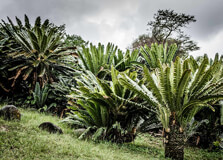
The Modjadji Cycad Reserve is a botanical garden located in Limpopo, South Africa. It is home to the largest concentration of a single cycad species in the world, the Modjadji cycad, also known as the African cycad. Location and Geographical Overview The Modjadji Cycad Reserve is situated near the town of Tzaneen in the Limpopo province of South Africa. It covers an area of approximately 60 hectares and is known for its lush vegetation and unique cycad species. Open and Closing Time The Modjadji Cycad Reserve is open to visitors from 8:00 am to 4:00 pm daily. It is closed on certain public holidays, so it is recommended to check the schedule before planning your visit. Entry Fee There is an entry fee to access the Modjadji Cycad Reserve. The fee is affordable and varies depending on age and group size. Children under a certain age may enter for free. Species-Flora/Fauna Availability The Modjadji Cycad Reserve is home to a diverse range of flora and fauna. In addition to the Modjadji cycad, visitors can also see various bird species, insects, and small mammals in the reserve. Activities Performed Visitors to the Modjadji Cycad Reserve can enjoy a range of activities, including guided walking tours, birdwatching, picnicking, and nature photography. The reserve is a great place for nature enthusiasts to explore and appreciate the unique plant life. Jeep Safari Charges For those looking for a more adventurous experience, jeep safaris are also available at the Modjadji Cycad Reserve. The safari charges are separate from the entry fee and offer visitors the opportunity to explore the reserve in a more immersive way. Age Criterion for Male, Female, Children and Their Entry Fee There may be specific age criteria for entry fees at the Modjadji Cycad Reserve. Typically, children under a certain age may enter for free, while adults and seniors may have different pricing tiers. It is best to check the current fee structure before visiting. Senior Citizen Facilities The Modjadji Cycad Reserve may offer special facilities for senior citizens, such as discounted entry fees, wheelchair accessibility, or guided tours tailored to their needs. It is recommended to inquire about these facilities when booking your visit. Best Time to Visit The best time to visit the Modjadji Cycad Reserve is during the spring and summer months when the cycads are in full bloom. The weather is pleasant, and the reserve is teeming with vibrant plant life and wildlife during this time. Nearby Places to Visit While in the area, visitors can also explore other attractions near the Modjadji Cycad Reserve, such as the Modjadji Nature Reserve, Agatha Crocodile Ranch, Debengeni Waterfalls, and the picturesque town of Tzaneen. Vehicle Parking Facility The Modjadji Cycad Reserve offers ample parking facilities for visitors arriving by car. There may be designated parking areas near the entrance of the reserve for convenience and safety. Rules and Regulations Visitors to the Modjadji Cycad Reserve are expected to follow certain rules and regulations to preserve the natural environment and ensure the safety of all guests. Some common rules include staying on designated paths, not littering, and respecting wildlife. How to Reach and Other Related Information The Modjadji Cycad Reserve is easily accessible by car from major cities in South Africa, such as Johannesburg and Pretoria. Visitors can also reach the reserve via public transportation or organized tours. It is recommended to book in advance and check the current operating hours before planning your visit. Overall, the Modjadji Cycad Reserve offers a unique and enriching experience for nature lovers and outdoor enthusiasts. With its diverse plant life, guided tours, and various activities, it is a must-visit destination for anyone exploring the natural beauty of South Africa's Limpopo province.
Explore More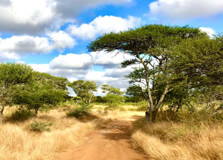
The Polokwane Game Reserve, located in the Limpopo province of South Africa, is a haven for nature lovers and wildlife enthusiasts. Covering an area of approximately 3200 hectares, this reserve offers a unique opportunity to observe a wide variety of flora and fauna in their natural habitat. Location and Geographical Overview The Polokwane Game Reserve is situated just outside the city of Polokwane, making it easily accessible for both locals and tourists. The reserve is characterized by its diverse landscape, which includes open grasslands, rocky hills, and dense bushveld. Open and Closing Time The Polokwane Game Reserve is open to visitors every day of the week from 6:00 am to 6:00 pm. It is important to note that the gates close promptly at 6:00 pm, so visitors should plan their visit accordingly. Entry Fee There is a nominal entry fee for visitors to the Polokwane Game Reserve, which helps to support conservation efforts and wildlife management within the reserve. The entry fee for adults is R50, while children under the age of 12 can enter for R30. Species-Flora/Fauna Availability The Polokwane Game Reserve is home to a wide variety of flora and fauna, including several species of antelope, zebra, giraffe, and other wildlife. Visitors can also spot numerous bird species, making it a paradise for birdwatchers. Activities Performed Visitors to the Polokwane Game Reserve can enjoy a range of activities, including game drives, guided walks, and birdwatching excursions. The reserve also offers picnic spots and braai facilities, allowing visitors to relax and enjoy a meal in the midst of nature. Jeep Safari Charges For those looking to explore the reserve in a more adventurous way, jeep safaris are available at an additional cost. The charges for a jeep safari vary depending on the duration of the excursion and the number of participants, with prices starting from R300 per person. Age Criterion and Entry Fee For male and female visitors, the entry fee is the same as mentioned earlier. Children under the age of 12 can enter for a reduced fee of R30. Seniors citizens, however, can avail a discount on the entry fee, paying only R40 to enjoy the reserve. Senior Citizen Facilities The Polokwane Game Reserve is equipped to cater to the needs of senior citizens, with designated rest areas and facilities available throughout the reserve. Seniors can also opt for guided tours or special activities tailored to their comfort and convenience. Best Time to Visit The best time to visit the Polokwane Game Reserve is during the cooler months of the year, between May and September. During this time, the weather is pleasant, and wildlife viewing opportunities are abundant, making it an ideal time for a safari adventure. Nearby Places to Visit Located in close proximity to Polokwane, visitors to the Polokwane Game Reserve can explore other attractions in the area, such as the Bakone Malapa Open-Air Museum and the Polokwane Bird and Reptile Park. These nearby places offer additional opportunities to learn about the culture and wildlife of the region. Vehicle Parking Facility The Polokwane Game Reserve provides ample parking facilities for visitors, ensuring a hassle-free experience for those traveling by car. The parking area is conveniently located near the entrance gate, making it easy to access the reserve and begin your wildlife adventure. Rules and Regulations While visiting the Polokwane Game Reserve, visitors are expected to abide by certain rules and regulations to ensure the safety of both wildlife and fellow visitors. These rules include staying on designated paths, refraining from feeding the animals, and respecting the natural environment. How to Reach and Other Related Information The Polokwane Game Reserve is approximately a 10-minute drive from the city center of Polokwane, making it easily accessible by car. Visitors can also opt for guided tours or shuttle services from their accommodations in Polokwane to the reserve. For more information on how to reach the reserve and plan your visit, it is recommended to contact the reserve or visit their official website. Overall, the Polokwane Game Reserve offers a unique opportunity to experience the beauty of South Africa's natural landscape and wildlife. Whether you are a nature enthusiast, a birdwatcher, or simply looking for a memorable safari adventure, a visit to this reserve is sure to leave you with unforgettable memories of the African bush.
Explore More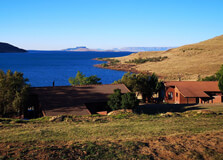
Sterkfontein Dam Reserve, located in the Free State province of South Africa, is a stunning natural area that offers visitors the opportunity to connect with nature and enjoy a range of outdoor activities. The reserve is known for its picturesque landscapes, diverse flora and fauna, and serene atmosphere, making it a popular destination for nature lovers and outdoor enthusiasts. Location and Geographical Overview Sterkfontein Dam Reserve is situated near the town of Harrismith in the Free State province of South Africa. The reserve is located on the banks of the Sterkfontein Dam, a large reservoir that is surrounded by rolling hills, rocky outcrops, and lush vegetation. The dam is fed by the Nuwejaarspruit and other smaller rivers, creating a beautiful and tranquil setting for visitors to enjoy. Open and Closing Time The Sterkfontein Dam Reserve is open to visitors from sunrise to sunset, seven days a week. The reserve's gates open early in the morning and close in the evening, allowing visitors to explore the area and enjoy its natural beauty throughout the day. Entry Fee There is a small entry fee to access the Sterkfontein Dam Reserve, which helps to support the conservation efforts and maintenance of the area. The entry fee is affordable and provides visitors with access to the reserve's hiking trails, picnic areas, and other amenities. Species-Flora/Fauna Availability The Sterkfontein Dam Reserve is home to a wide variety of plant and animal species, making it a haven for wildlife enthusiasts and nature photographers. Visitors can expect to see a range of flora, including grasslands, acacias, and indigenous trees, as well as diverse fauna such as antelope, birds, and smaller mammals. Activities Performed Visitors to the Sterkfontein Dam Reserve can enjoy a range of outdoor activities, including hiking, bird watching, fishing, and picnicking. The reserve boasts several well-marked hiking trails that offer stunning views of the surrounding landscape, as well as designated fishing spots where anglers can try their luck at catching freshwater fish. Jeep Safari Charges For those looking to explore the reserve in a more adventurous way, jeep safaris are available for a fee. Visitors can book a guided jeep safari tour that takes them through the reserve's rugged terrain, offering them a chance to see wildlife up close and experience the beauty of the area in a unique way. Age Criterion and Entry Fee Visitors of all ages are welcome at the Sterkfontein Dam Reserve, with different entry fees for adults, children, and senior citizens. The entry fee varies based on age, with discounted rates available for children and senior citizens. Children under a certain age may also be allowed entry for free. Senior Citizen Facilities The Sterkfontein Dam Reserve offers facilities for senior citizens, including designated seating areas, accessible hiking trails, and restrooms with handicap access. The reserve strives to accommodate visitors of all ages and abilities, making it a welcoming destination for seniors looking to enjoy nature and outdoor activities. Best Time to Visit The best time to visit the Sterkfontein Dam Reserve is during the cooler months of the year, typically from late winter to early spring. The weather is mild and pleasant during this time, making it ideal for outdoor activities such as hiking, bird watching, and picnicking. Visitors can also enjoy the beautiful scenery and wildlife sightings without the heat and humidity of the summer months. Nearby Places to Visit For those looking to explore more of the Free State province, there are several nearby attractions worth visiting. Some popular destinations in the area include the Golden Gate Highlands National Park, Clarens, and the Maloti Drakensberg Route, all of which offer stunning landscapes, outdoor activities, and cultural experiences for visitors to enjoy. Vehicle Parking Facility The Sterkfontein Dam Reserve provides ample parking for visitors, with designated parking areas near the entrance to the reserve. Visitors can park their vehicles securely and conveniently, allowing them easy access to the hiking trails, picnic areas, and other attractions within the reserve. Rules and Regulations Visitors to the Sterkfontein Dam Reserve are asked to adhere to certain rules and regulations to help protect the natural environment and ensure the safety of all visitors. Some common rules include staying on marked trails, not feeding wildlife, and properly disposing of trash. By following these guidelines, visitors can help preserve the beauty of the reserve for future generations to enjoy. How to Reach and Other Related Information The Sterkfontein Dam Reserve is easily accessible by car, with well-maintained roads leading to the entrance of the reserve. Visitors can reach the reserve from major cities such as Johannesburg and Durban via the N3 highway, with signs directing them to the reserve's location near Harrismith. For those traveling from further afield, there are also options for public transportation and guided tours that can provide transportation to and from the reserve.
Explore More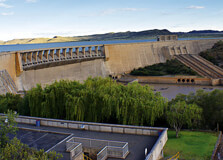
The Gariep Dam Nature Reserve, located in the Free State province of South Africa, is a stunning natural attraction that offers visitors the opportunity to explore a diverse range of flora and fauna. The reserve is situated next to the vast Gariep Dam, which is the largest dam in South Africa and a popular spot for water sports and leisure activities. With its picturesque landscapes and abundance of wildlife, the Gariep Dam Nature Reserve is a must-visit destination for nature lovers and outdoor enthusiasts. Location and Geographical Overview The Gariep Dam Nature Reserve is located near the town of Norvalspont in the Free State province of South Africa. The reserve is situated on the northern shore of the Gariep Dam, which is fed by the Orange River. The surrounding landscape is characterized by rolling hills, rocky outcrops, and open plains, creating a diverse and scenic environment for visitors to explore. Opening and Closing Time The Gariep Dam Nature Reserve is open to visitors from 8am to 5pm, seven days a week. Visitors are advised to check the reserve's official website or contact the visitor center for any updated information on operating hours. Entry Fee There is an entry fee to access the Gariep Dam Nature Reserve, which helps support the conservation efforts and maintenance of the park. The entry fee may vary for different age groups and categories, so visitors are encouraged to inquire about the current rates at the time of their visit. Species-Flora/Fauna Availability The Gariep Dam Nature Reserve is home to a wide variety of plant and animal species, making it a paradise for nature enthusiasts. Visitors can expect to see indigenous flora such as aloes, spekbooms, and acacias, as well as diverse fauna including antelope, zebras, and a variety of bird species. The reserve is also home to smaller mammals like the rock hyrax and dassies, which can be spotted in the rocky terrain. Activities Performed Visitors to the Gariep Dam Nature Reserve can enjoy a range of activities to explore the natural beauty of the area. Popular activities include hiking, bird watching, picnicking, and guided nature walks. The reserve also offers opportunities for fishing, boating, and water sports on the Gariep Dam, allowing visitors to experience the scenic surroundings from a different perspective. Jeep Safari Charges The Gariep Dam Nature Reserve offers jeep safari tours for visitors to explore the reserve and spot wildlife in their natural habitat. The safari charges may vary depending on the duration and type of safari experience offered, so visitors are advised to inquire about the current rates and availability at the visitor center. Age Criterion for Male, Female, Children, and Their Entry Fee The Gariep Dam Nature Reserve may have different entry fees based on age groups, with discounts available for children, senior citizens, and certain categories of visitors. It is recommended to check with the reserve authorities for the specific age criteria and entry fees for male, female, and children at the time of planning a visit. Senior Citizen Facilities The Gariep Dam Nature Reserve may offer special facilities and discounts for senior citizens, making it easier for older visitors to explore the reserve and enjoy the natural beauty of the area. Senior citizen facilities may include wheelchair access, rest areas, and discounted entry fees, providing a comfortable and enjoyable experience for elderly visitors. Best Time to Visit The best time to visit the Gariep Dam Nature Reserve is during the cooler months of autumn and spring when the weather is mild and the landscape is in full bloom. These seasons offer pleasant temperatures for outdoor activities and wildlife sightings, making it an ideal time to explore the reserve and enjoy its natural beauty. Nearby Places to Visit There are several nearby attractions and points of interest that visitors can explore while visiting the Gariep Dam Nature Reserve. Some popular nearby places to visit include the Gariep Dam Wall, the Oviston Nature Reserve, and the Bethulie Museum, providing additional opportunities for sightseeing and cultural experiences in the area. Vehicle Parking Facility The Gariep Dam Nature Reserve offers vehicle parking facilities for visitors, allowing them to safely park their cars while exploring the reserve. Visitors are advised to follow any designated parking areas and guidelines to ensure the safety and security of their vehicles during their visit. Rules and Regulations Visitors to the Gariep Dam Nature Reserve are required to follow certain rules and regulations to protect the natural environment and wildlife within the reserve. Some common rules may include staying on designated trails, refraining from littering, and respecting the flora and fauna in the area. It is important for visitors to adhere to these rules to help preserve the beauty and integrity of the reserve for future generations. How to Reach and Other Related Information The Gariep Dam Nature Reserve is easily accessible by road from major cities in South Africa, with well-maintained highways leading to the entrance of the reserve. Visitors can reach the reserve by car or private transportation, and there are also options for guided tours and transfers available. For more information on how to reach the reserve, including directions, transportation options, and accommodation recommendations, visitors are encouraged to contact the reserve authorities or visit their official website.
Explore More